15 October 2018
By portermathewsblog
via reiwa.com.au
 Affordability in Perth’s residential sales market improved during the September 2018 quarter, with house and unit prices softening marginally.
Affordability in Perth’s residential sales market improved during the September 2018 quarter, with house and unit prices softening marginally.
REIWA President Damian Collins said there was excellent opportunity for buyers and investors to take advantage of current market conditions to secure their next home or investment property.
“While the worst of the market downturn appears to be behind us, the results of the September 2018 quarter reveal conditions are favourable for buyers and investors,” Mr Collins said.
Median house and unit price
reiwa.com data shows Perth’s median house price should settle at $505,000 for the September 2018 quarter.
“This is 1.9 per cent lower than the June 2018 quarter median and one per cent lower than last year’s September quarter,” Mr Collins said.
“While quarterly median figures can be more subject to stock composition changes, the fact that the annual change is only one per cent lower suggests that we are at or near the bottom.
“It was a similar story for the unit market, with the median expected to settle at $395,000, which is 1.3 per cent lower than the June 2018 quarter and 2.5 per cent lower than the September 2017 quarter.”
While the overall market experienced a decline in median house price during the quarter, 57 suburbs across the area bucked this trend.
“The top performing suburbs for median house price growth were Swan View, East Cannington, Como, Hillarys and Cottesloe.” Mr Collins said.
“In the unit market, Maylands, Midland, Tuart Hill, Fremantle and Claremont were the suburbs with the strongest price growth.”
Sales activity
There were fewer sales in the September 2018 quarter than there were during the June 2018 quarter.
Mr Collins said reiwa.com data showed 6,428 sales for the quarter, which was 4.9 per cent lower than last quarter.
“It’s not uncommon to experience a decline in sales during the September quarter, with West Australians typically less inclined to search for property during winter. We tend to see activity slow during the winter months before increasing again as the weather warms up,” Mr Collins said.
The share of house sales in Perth has increased, with reiwa.com data showing houses now comprise 74 per cent of all sales, compared to 65 per cent at the same time last year.
Perth’s top selling suburbs for house sales during the September 2018 quarter were Baldivis, Canning Vale, Morley, Dianella and Gosnells, while the suburbs to record the biggest improvement in house sales activity were Cooloongup, The Vines, Alexander Heights, Mirrabooka and Wattle Grove.
“It’s a good time to buy, which is reflected in the fact a higher proportion of houses are now being sold. This shift in the composition of sales (houses, units and land) indicates buyers are more inclined to purchase a house than they might have otherwise been. This can be attributed to housing affordability improving across the metro area, which has made buying a house a more attainable property purchase,” Mr Collins said.
“We’ve also seen an increase in activity between the $350,000 and $500,000 price range during the September quarter, which is pleasing as it indicates first home buyers remain an active component of the Perth market.”
Listings for sale
There were 13,850 properties for sale in Perth at the end of the September 2018 quarter.
Mr Collins said stock levels across the metro area had declined 3.7 per cent during the quarter.
“It’s pleasing that, although there were fewer sales this quarter, listing stock continues to be absorbed.
“This is the third consecutive quarter we’ve seen listings for sale decline, which is a positive step forward in the market’s recovery,” Mr Collins said.
Comments (0)
04 September 2018
By portermathewsblog
via therealestateconversation.com.au
Jon Bahen, director of Abel Property – Cottesloe told WILLIAMS MEDIA about building inspection reports in Western Australia, including what they are, why you need one, and what they cover.
What is a building inspection report? And do you need one?
For most people purchasing a property is one of the biggest financial decisions they will make in their life and it is always important to ensure due diligence on the home has been done. A building inspection report can be part of this process and is a great way to protect your interests and peace of mind.
In most circumstances, a building inspection report is included as a condition of the Contract for Sale. The investigation for this report needs to be carried out by a qualified building inspector, surveyor or builder and the cost for this report is borne by the buyer.
There are a number of different types of building reports with different cost structures. For example, a basic structural inspection can be obtained for $280 for a single level three bed, two bath, brick and tile/metal home with slab on the ground, while a premium inspection which is usually used is around $495. This expenditure is a wise investment considering the potential cost of buying a property that needs extensive unexpected restoration and repairs.
What does a building inspection report look like?
The report will include photos and address of the property, name of the applicant, the time and date and the age of the home. It also lists the name, contact details, and qualifications of the inspector, including their WA Builders Registration number.
Next, a summary of the significant findings will be highlighted to ensure the prospective buyer can easily see what necessary or immediate repairs are required.
The report will contain explanations of the definitions used by the inspector to record the condition of the property and any disclaimers and information about what is not reported on.
The remainder of the pages will contain photos and detailed room-by-room information on the condition of the floors, walls, ceilings, doors, and all fixtures including bathroom and kitchen appliances.
What does a building inspection report cover?
The inspection covers a visual assessment of the property and provides an opinion regarding its general condition. An estimate of the cost to repair the defects is not within the scope of the Australian Standard and does not form part of a report. If the property is part of strata or company title, the inspection does not cover common property, only the immediate interior and exterior.
The electrical and plumbing systems are only checked for basic functioning. If the buyer requires a more detailed report on these systems, they will need to employ licensed professional plumbers or electricians.
Comments (0)
10 August 2018
By portermathewsblog
via popsugar.com.au
 Image Source: Studio McGee
Image Source: Studio McGee
Wouldn’t it be so nice to know what an interior designer actually notices in your home? Having this information would make it that much easier when you clean or decorate new spaces, or even when you decide what to renovate and what to leave as is. It can be somewhat difficult to take a critical eye to your own space that you see consistently day after day, but knowing where to place your focus and creative energy would certainly help to take out some of that guesswork, so we decided to reach out to design professional Shelly Gerritsma from Canter Lane Interiors instead. Read on to learn the five design elements she always notices first and wants you to focus on first as well.
Flooring
 Image Source: A Beautiful Mess
Image Source: A Beautiful Mess
As soon as she steps into your home, Shelly notices what’s beneath her feet. “Flooring is a major item. If carpet is dated/worn/sagging/etc, it really devalues the home,” Shelly says. So, instead of using that area rug that has probably seen better days, opt for a brand new design in a fun print, or if you want to really get creative, try adding hardwoods in a funky colour. Shelly will notice!
Wall Colour & Finish
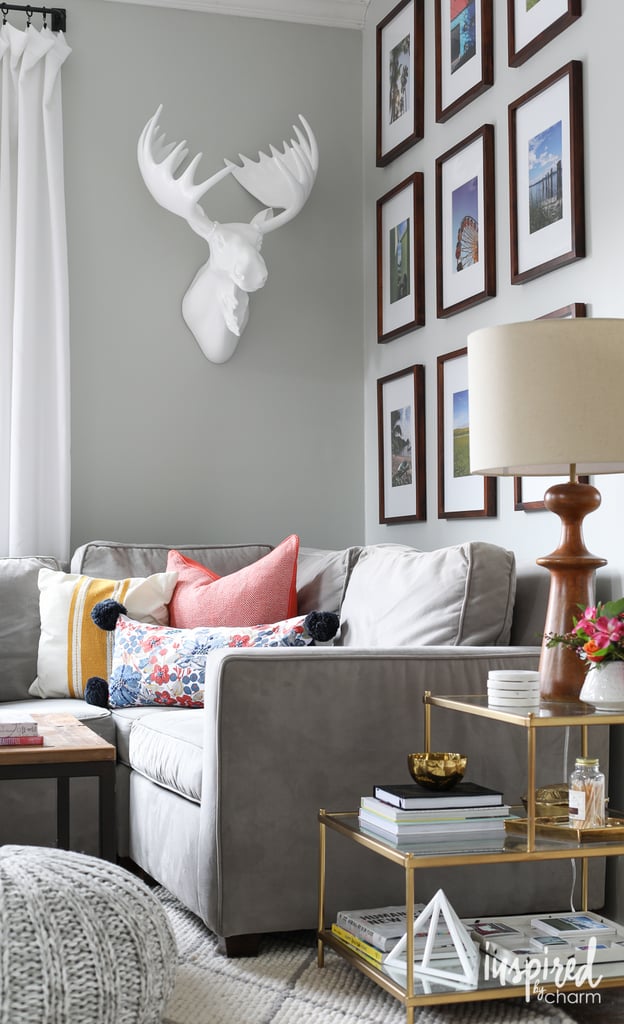
Image Source: Inspired by Charm
Once she’s assessed the flooring, Shelly is onto your wall colour and finishes. She advises that “using the proper paint finish for spaces is huge. Do not use a semi-gloss or a gloss paint finish on main living walls as it cheapens the space and looks too harsh. Stick with a flat or matte finish.” She also reminds us that nothing draws negative attention quicker than sloppy paint lines, so always ensure that those appear neat and finished.
Ceilings
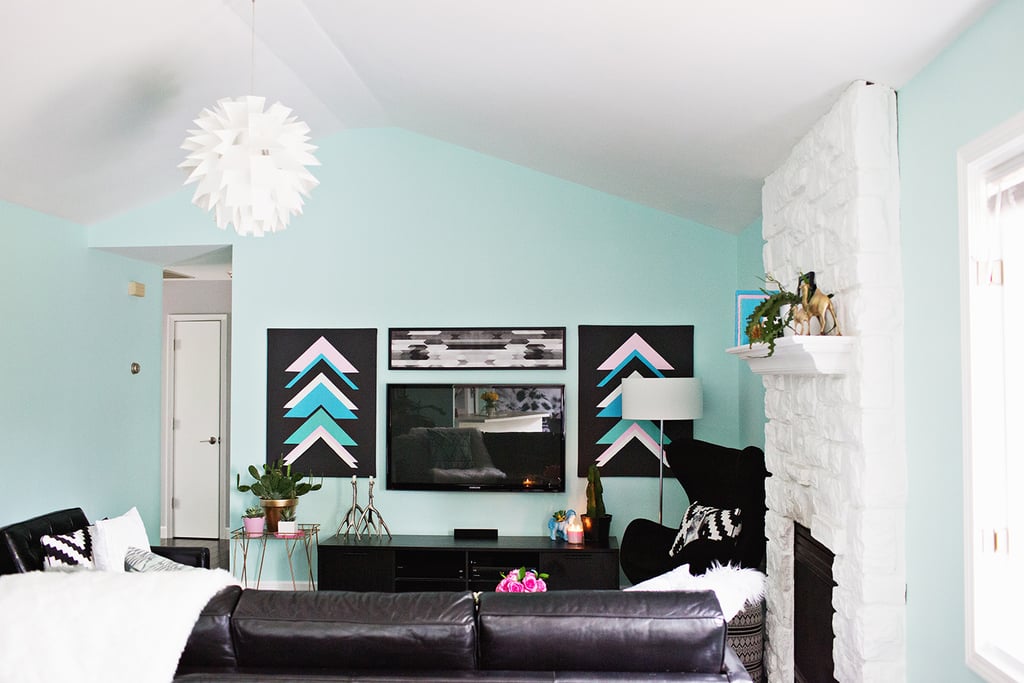 Image Source: A Beautiful Mess
Image Source: A Beautiful Mess
Another foundational element that will draw major attention from Shelly is your ceiling. Whether you want to modernise the appearance of your ceiling or you just need to open up the space a bit, this is one area that you won’t regret putting some time into. Shelly confirms that “smoothing out popcorn ceilings is a great way to add home value and to make spaces feel larger due to the shadows cast by this dated finish.”
Scale-Appropriate Furniture
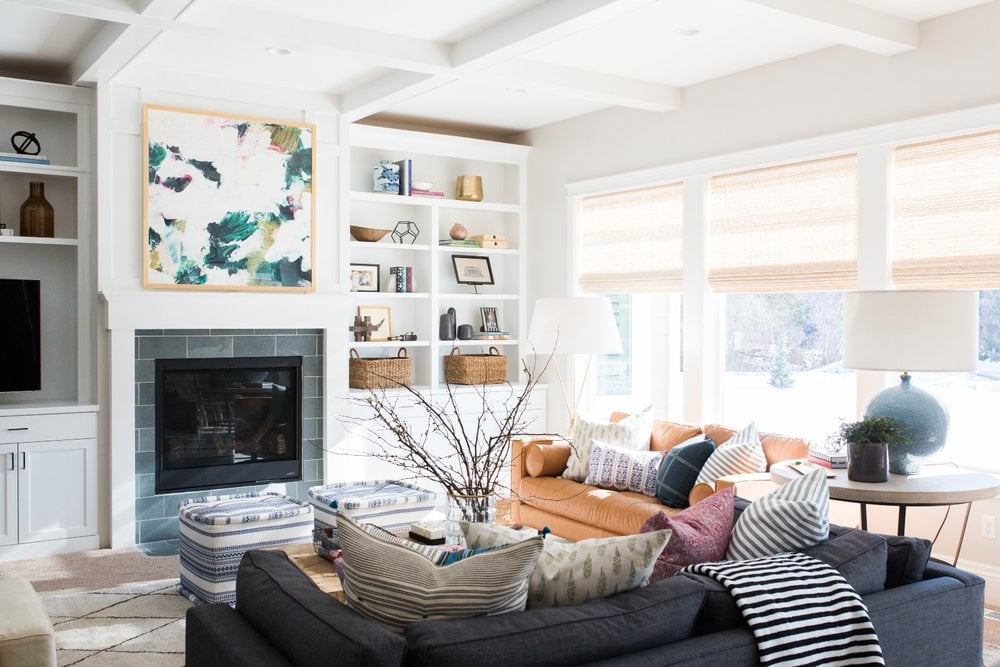 Image Source: Studio McGee
Image Source: Studio McGee
Properly scaled furnishings are key when it comes to creating a harmonious flow that’s sure to get noticed in your home. Shelly says, “Make sure that your furniture is not overwhelmingly large or so small that it looks out of balance in the space.” A huge sectional that is crammed into a space or a dainty nightstand displayed in an oversize master bedroom will do nothing but draw negative attention.
Clutter!
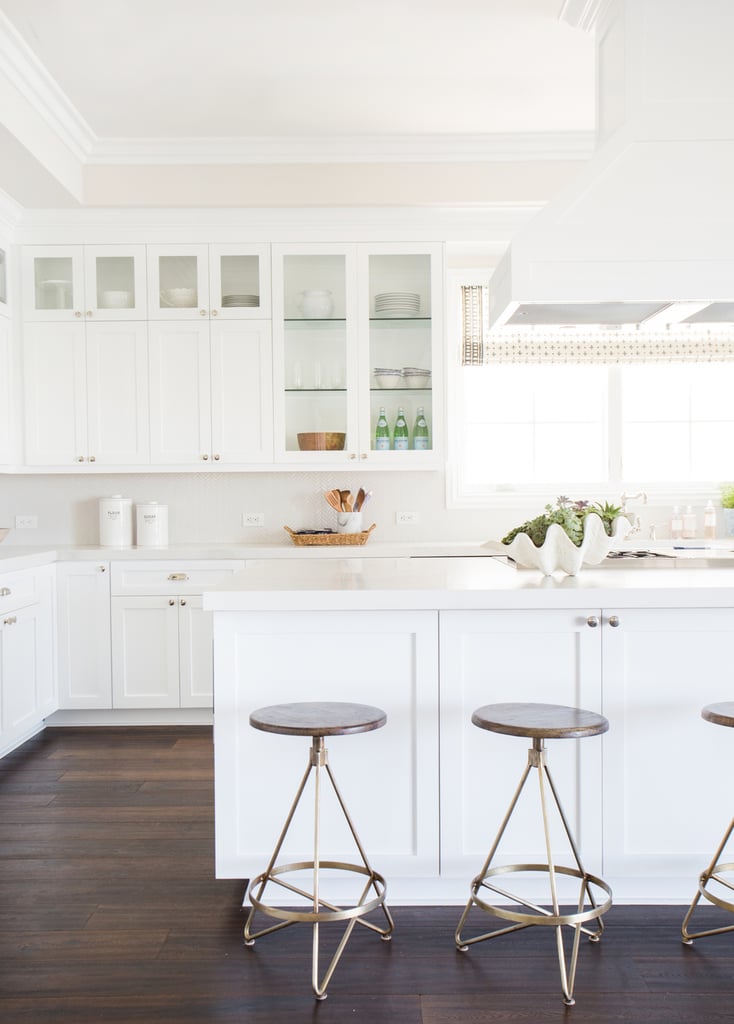 Image Source: Studio McGee
Image Source: Studio McGee
And lastly, we finish up with none other than that attention-grabbing eyesore: clutter. Yes, clutter! Shelly promises, “Keeping spaces clean and clutter to a minimum is a huge plus. Our spaces truly affect our well being, and spaces that are messy and dirty can have major psychological and physical impact.” Plus, not only will your guests appreciate your clutter-free home but you too will benefit from your Zen space.
Comments (0)
07 August 2018
By portermathewsblog
via https://www.therealestateconversation.com.au
Property prices in Perth have strengthened during the June 2018 quarter, according to fresh research from the Real Estate Institute of Western Australia (REIWA).

Simon McGrath, principal of Abel McGrath in Perth told WILLIAMS MEDIA now is the time to “be strategic and make a committment to securing a property in that location you’ve always wanted”, as data from the Real Estate Institute of Western Australia reveals property prices in Perth are strengthening.
REIWA President, Hayden Groves told WILLIAMS MEDIA the data indicates Perth’s median house price would settle at around $520,000 for the June 2018 quarter, which was up one per cent compared to the March 2018 quarter and two per cent compared to the June 2017 quarter.
“In addition, Perth’s median unit price is expected to lift by 4.9 per cent to $419,500 for the June 2018 quarter, which is 2.3 per cent higher than the same time last year,” Mr Groves said.
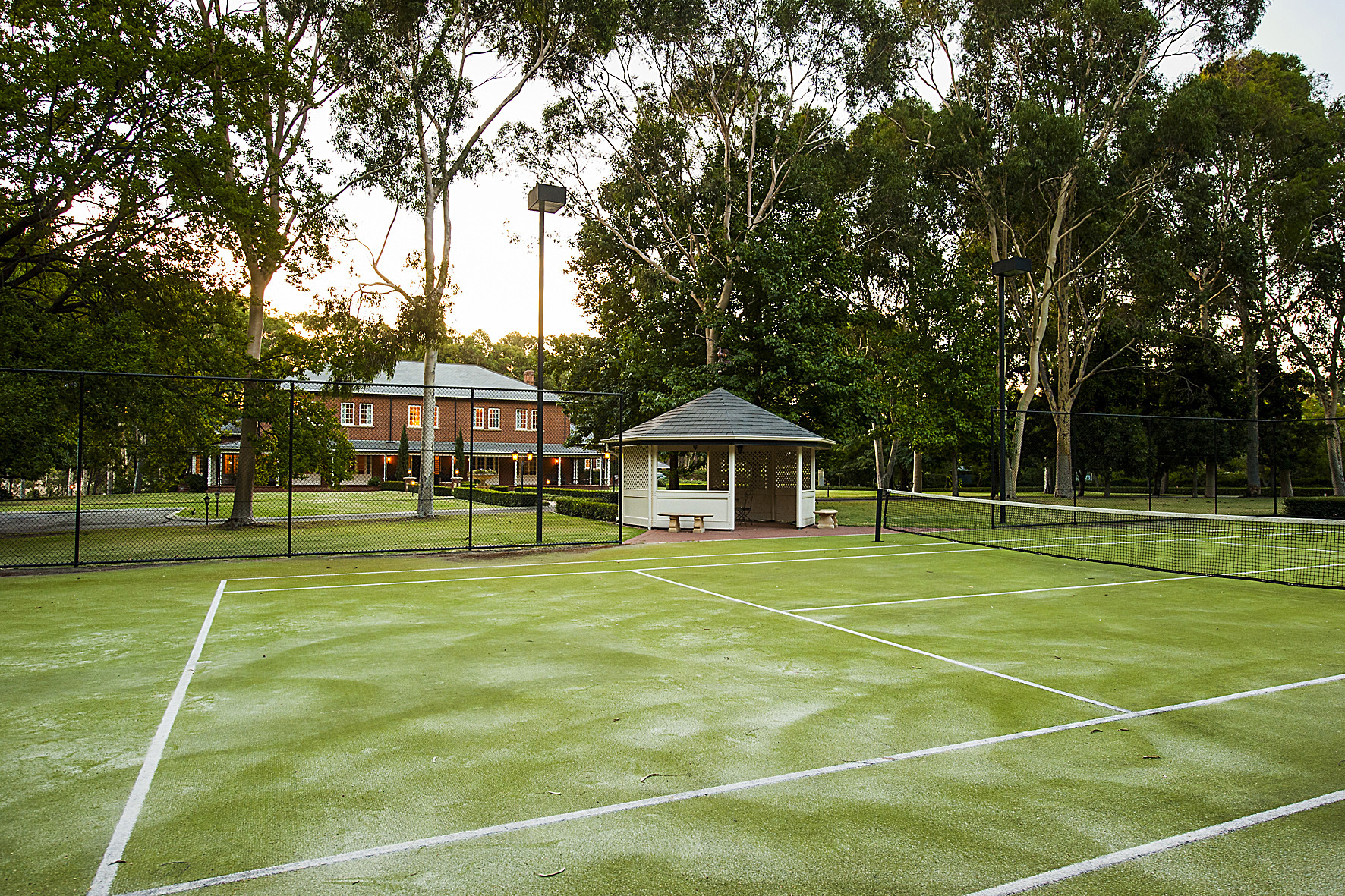 2045 Roland Road, in Western Australia is for sale through Neil McAllister of Bellcourt Property Group as featured on Luxury List
2045 Roland Road, in Western Australia is for sale through Neil McAllister of Bellcourt Property Group as featured on Luxury List
“After declining during the March quarter, it is pleasing to see prices rebound strongly this quarter. With the worst of the market downturn appearing over, the improvement in house and unit prices this quarter suggests buyer confidence is returning which should bode well for sellers as we move into spring,” Mr Groves said.
Mr McGrath’s advice to those looking to enter the market is to act now.
“At times like these, properties become available that would generally not be available. That is the big gift in this market,” McGrath said.
Overall, Mr McGrath says the market is “okay, but not great”.
“Perth is nothing but a big mining town. The flow-on effect from the mining industry affects Perth’s real estate market, so you’ve got a real upswing. Behind the scenes there is plenty of optimism.
“There is still plenty of caution in the market, prices aren’t shooting up. It is a very stoic market.
“We are seeing reasonable numbers at home opens, but it can be very spasmodic. Some home openings will be fantastic, others very quiet – there is no rhyme or reason to it,” Mr McGrath continued.
With 6,900 sales recorded during the June 2018 quarter, sales volumes declined during the June quarter. Mr Groves said the onset of winter likely contributed to subdued activity levels.
“It’s not uncommon for activity to drop off this time of year. Traditionally, activity tends to slow during the winter months before picking up again in spring,” Mr Groves said.
 2045 Roland Road, in Western Australia is for sale through Neil McAllister of Bellcourt Property Group as featured on Luxury List
2045 Roland Road, in Western Australia is for sale through Neil McAllister of Bellcourt Property Group as featured on Luxury List
Despite the overall decline in sales, numerous suburbs recorded more sales this quarter than they did in the last quarter.
“The suburbs with the biggest improvement in house sales were North Perth, Queens Park, Singleton, Camillo and Beldon, while West Perth, Balcatta, Rockingham, Claremont and Mount Lawley had the biggest improvement in unit sales,” Mr Groves said.
“Good quality family homes attracting a lot of attention”
REIWA data shows the composition of sales shifted during the June quarter, with more house sales recorded in the $800,000 and above price range than in the last quarter.
“The June 2018 quarter continued the trends observed during the December 2017 quarter, with good quality family homes attracting a lot of attention in aspirational areas,” Groves told WILLIAMS MEDIA.
“As the Western Australian economy begins to regain strength and owner-occupier loans remain the most affordable they have been in decades, buyers are recognising there is good opportunity to secure a family home in areas that might previously have been considered out of reach,” Mr Groves said.
Listing stock has “hit the ceiling”
Mr Groves told WILLIAMS MEDIA stock levels across the metro area have declined 1.1 per cent during the June 2018 quarter.
“We certainly appear to have hit the ceiling as far as listing stock is concerned. Despite fewer sales being recorded this quarter, it is encouraging to see stock levels have continued to be absorbed,” Mr Groves said.
On average, it took 67 days to sell a house in Perth during the quarter, one day faster than both the March 2018 and June 2017 quarters.
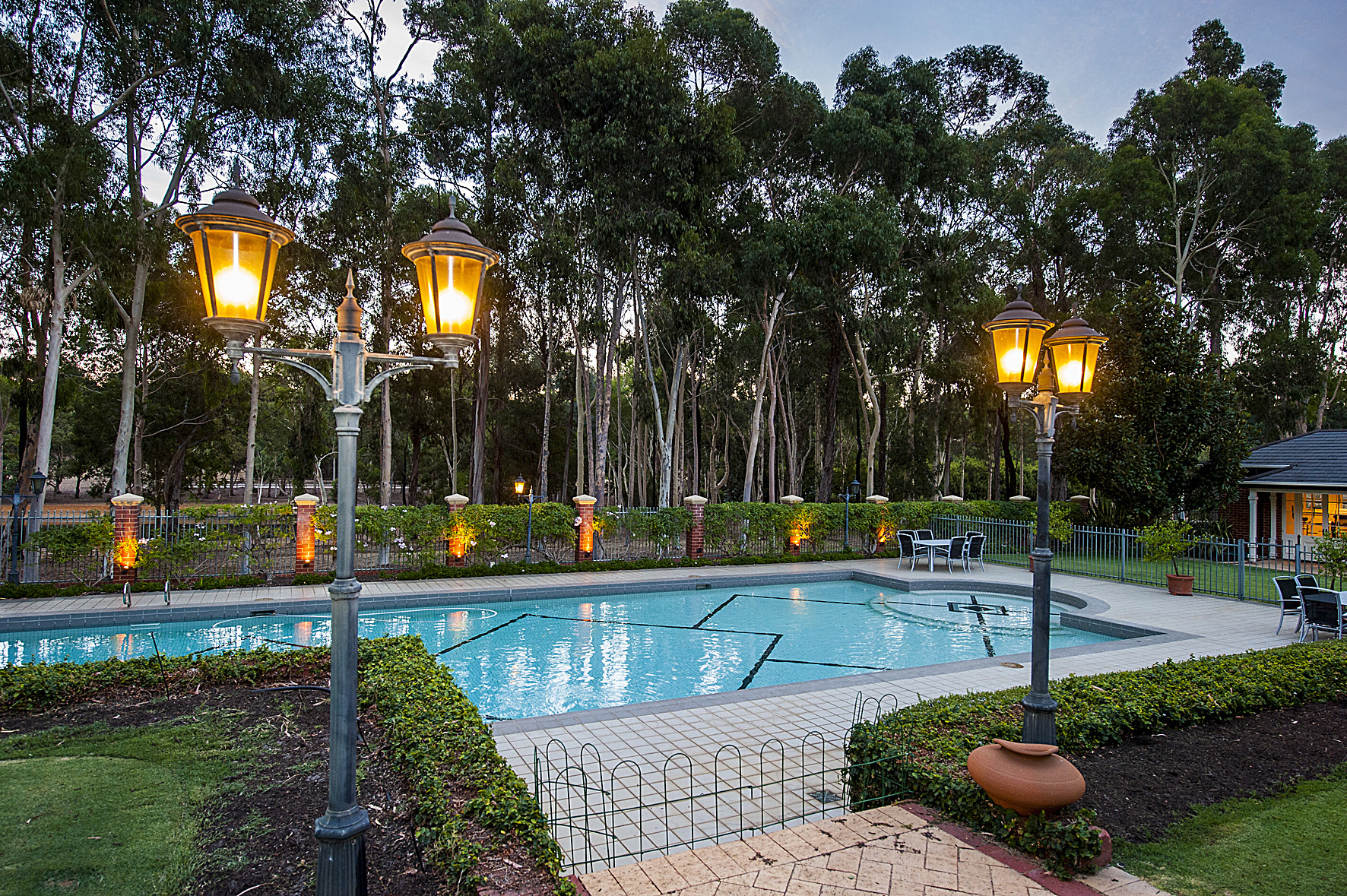 2045 Roland Road, in Western Australia is for sale through Neil McAllister of Bellcourt Property Group as featured on Luxury List
2045 Roland Road, in Western Australia is for sale through Neil McAllister of Bellcourt Property Group as featured on Luxury List
Mr McGrath told WILLIAMS MEDIA that although the market is pretty tough, his area in the western suburbs of Perth have short supply.
“There’s no denying – it is pretty tough. The good news in the western suburbs is that we have got short supply, whereas in the greater Perth market there is oversupply in many places. The short supply in the western suburbs is ticking the value of buoyance.” Mr McGrath said.
Less vendors discounting their asking price
Data for the June 2018 quarter shows the proportion of vendors who had to discount their asking price in order to achieve a sale declined by five per cent.
“With reductions observed in average selling days and discounting, this is a good indicator sellers are listening to the advice of their agents and pricing their property in line with market expectations,” Mr Groves said.
Comments (0)
03 August 2018
By portermathewsblog
via houzz.com.au
In this practical series, we ask experts to answer your burning home and design questions. Here, Luke Menzel, chief executive officer at the Energy Efficiency Council, shares some practical tips for keeping a lid on your winter heating consumption and costs.
 Stop heat escaping
Stop heat escaping
For most homes in colder parts of Australia, heating is by far the biggest slice of the energy bill pie. Insufficient insulation and draughty homes mean that heaters have to work much harder to keep you warm, which adds to power costs.
Draught-proofing your home to prevent heat escaping is one of the simplest and most cost-effective ways to save energy, allowing you to stay warm and toasty without cranking up the thermostat.

Turn the thermostat down
Turning the thermostat too high can be a huge drain on energy and your finances, with each degree adding around 10 per cent to your heating bill. For maximum efficiency, aim to set it between 18 and 20°C. If this feels too chilly (most of us prefer a more comfortable 25 or 26°C in winter), try moving away from uncovered windows, sealing draughts and popping on a jumper.

Rug up
Having too many cold surfaces in your home can add to the chill factor too – in fact, it can have just as much of an effect as air temperature.
To make your home feel warmer, consider installing secondary glazing and adding heavy curtains to windows, laying rugs on cold, hard floors, and moving your favourite armchair so it’s not right beside a cold window.
Open curtains during the day to allow the winter sun to warm the surfaces in your home. Draw curtains at night to keep the heat in.

Only heat the rooms you’re using
Rather than heating your entire home, zone your heating so it only warms up those rooms you spend time in. Do this by closing doors to keep the heat where you need it. If you’re installing a new heating system, consider a ducted system that can be zoned for individual rooms.
Tip: Check ducting before the start of winter to check that it’s leak-free, well-insulated and in proper working condition. This can sometimes be done with thermal imaging cameras, to save crawling around in dark spaces.
 Reconsider halogens
Reconsider halogens
Halogen downlights can be a huge energy waster in winter. Aside from their high energy consumption, these lights need to be kept far away from insulation as a fire-safety precaution. This means there is an uninsulated patch of ceiling surrounding halogen downlights that provides an easy escape route for heat.
The heat that rises from each downlight can also create a chimney effect and suck warm air out of your house, which leads to chilly draughts.
 Replace old appliances
Replace old appliances
That old, second fridge in the garage or dated reverse-cycle air conditioner in the living room could be costing you more than you realise. Consider the numbers; a new, energy-efficient fridge can cost half as much to run as one that’s 15 to 20 years old – this equates to a saving of about $150 per year. Meanwhile, most reverse-cycle heating/cooling systems are between 30 and 40 per cent more efficient than those of 15 years ago.
Splashing out on new energy-efficient appliances can cut your energy costs considerably.
 Be star savvy
Be star savvy
Most major appliances, such as fridges and reverse-cycle heating/cooling systems, come labelled with an energy-star rating, which tells you how efficient they are and how much energy they’ll consume. It ranges from one to six stars (although in recent years, four additional high-performance stars have been added to many products). The more stars, the more efficient the product. Appliances with more stars may cost a little more, but you’ll save the money back in running costs.
Be aware that if you have an older appliance at home with a three-star label, it might only rate as two stars by today’s standards – and may not even be allowed to be sold under current minimum standard rules.
The number below the stars on the label is a calculation of how much electricity the appliance will typically consume in a year. Multiply this number by your electricity tariff to get annual running costs.
Tip: Tariffs can differ significantly at different times of day, so choosing when to use your appliance can help save you money. You might find it more cost efficient to run your washer, dryer or dishwasher at night or early in the morning.
 Reduce pump time
Reduce pump time
If you have a swimming pool, halving the pump-timer duration in winter can result in substantial savings. However, do check with your local pool or spa specialist to ensure you maximise energy efficiency while still meeting all the health requirements required with a pool.

Tell us
What’s your winter energy-saving tip? Tell us in the Comments section below. And don’t forget to like this story, share it and save the photos. Join the conversation.
Comments (0)
30 July 2018
By portermathewsblog
via The West Australian

The West Australian economy is “out of the woods”, one of the nation’s most respected forecasters has declared, with housing and wages finally gaining traction.
Amid warnings the Turnbull Government was making the same mistake of the Howard government by spending a temporary revenue bump on expensive personal income tax cuts, Deloitte Access Economics said the outlook for WA was definitely brightening.
The State endured its worst year on record through 2016-17 while the domestic economy had been in the doldrums for the past four years. But a string of data, including job figures, point to an important turnaround.
Deloitte Access director Chris Richardson said it was now clear WA was recovering from the economic “wave” that was the end of the mining boom.
He expects a lift in retail sales, population growth, wages and housing construction will all improve through this year and accelerate into 2019-20.
Wage growth alone is tipped to more than double the insipid 0.6 per cent growth endured by private sector workers last financial year. “WA’s economy is out of the woods, but it isn’t quite yet out of the doldrums,” Mr Richardson said.
“The good news is that WA’s economy is gradually making its way on to a more settled and sustainable path. The State is restructuring and rebalancing and looking for non-mining related sources of growth.”
While most focus has been on the collapse in engineering spending by the mining sector, Deloitte Access highlighted the step-up by the State Government to fill the void.
It said the first stage of the $3 billion Perth Metronet, which includes 72km of rail line and 18 stations, would give a needed boost to the local economy. The situation is a little different for the Federal Budget, with Deloitte Access concerned that recent tax cuts are built on a mirage of improved tax revenues.
Mr Richardson said tax cuts were built on an increase in tax revenues that was likely to be transitory. The Budget was also expecting to absorb the cuts while it was still in deficit.
He said a gradual slowdown in China would eat into the better tax collections from the resources sector while a tightening of credit would hit east coast property markets. “Oz has repeated an old mistake: spending a temporary revenue boom on permanent promises,” he said.
Comments (0)
27 July 2018
By portermathewsblog
via houzz.com.au
Furniture that does more than one job is a godsend in a small home – here’s what you need to know before you buy.
In this practical series, we ask experts to answer your burning home and design questions. Here, Christine Gough, interior design leader at Ikea Australia, shares her top tips for selecting multi-functional furniture for a compact home.
If you’re struggling with clutter, a lack of space or a shortage of storage in your home, multi-functional furniture can really help. So what makes for a multi-functional piece? It is flexible, performs more than one function, and it can be moved around or customised to suit your needs. It often also includes storage, giving you a useful home for clutter so you can create a clear and inviting home.
Here are a few of the most useful designs to consider.

Image: Delaktig range at Ikea
Modular sofas
Modular sofas allow you to personalise your seating so that it fits your space – and your needs – perfectly. Choose from a ready-made combination of sofa pieces, or create a new combination to suit your home.
Modular sofas are designed with many functions and possibilities in mind. Many contain hidden storage, while others can be converted into a sofa bed to house an overnight guest. You’ll also find styles with removable covers so you can update the look of your sofa with ease.
‘Open-source’ furniture takes the idea of personalisation one step further. Ikea’s new modular Delaktig sofa (designed in conjunction with British designer Tom Dixon) has an aluminium frame and the set-up can be endlessly configured to suit your changing needs – add a side table, a lamp or two, move an armrest or change the cover, for example.

Storage or nest tables
If space is tight, pieces that do double duty, such as a coffee table with shelves or a storage basket, are a boon. They provide the perfect spot to store cushions, magazines and kids’ toys. Choosing a design on castors means you can also move it to different spots in a flash.
A nest of coffee tables is also a great option for a small space. It offers endless possibilities – pull the trio apart and use as separate side tables when you have friends over for drinks, or place them side-by-side to create one long coffee table for takeaway pizza night.
Furniture with concealed storage
Ottomans are an incredibly useful piece of furniture for any living room – they can act as seating, footstools or even a makeshift table to pop a book or magazine on. Select one with hidden storage inside, and it will provide you with a handy extra spot to store blankets, throws and the kids’ play things.

What are the most useful features to look for in a multi-functional piece?
- Customisable: You should be able to personalise it to suit your style and living needs.
- Neutral colours: Shades of grey, taupe and stone will co-ordinate with most colour palettes, and can easily be updated seasonally with the addition of pattered and coloured cushions and throws.
- Flexibility: Look for features such as removable covers and castors that make it easy to move pieces around or switch up the look of your space.

Zone smart
It’s not just furniture that’s gone multi-functional, it’s rooms too. With many of us moving to smaller homes and open-plan living increasingly the norm, the number of activities that happen in each room has increased. Once upon a time, our living rooms were used for socialising or watching television, but today you might eat dinner there, play games, listen to music, fold laundry and even exercise.
To get the best from a multi-functional room, position furniture to create zones for different activities, such as dining, socialising, work and exercise. Be led by the space and your lifestyle needs, and not by convention. If it works better in your space to have a pair of modular sofas positioned back-to-back or side-by-side rather than a traditional sofa set-up, go for it.
When positioning furniture, factor in foot traffic too. There should be enough room to move through the room comfortably.
Image: Ikea
Comments (0)
23 July 2018
By portermathewsblog
via therealestateconversation.com.au
Real estate in Perth is at its most affordable on record, as falling prices give first home buyers their best chance of stepping onto the property ladder, according to the Housing Industry Association (HIA).
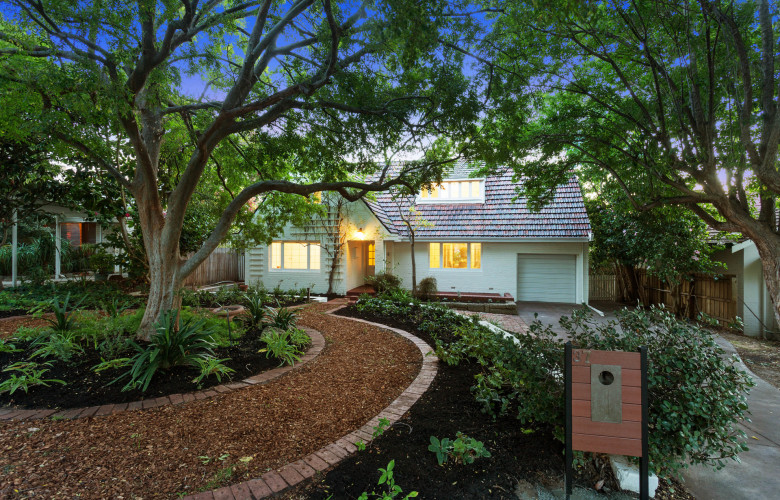 37 Marita Road, Nedlands, Perth under offer with Michelle Kerr from Abel McGrath as featured on Luxury List. Abel McGrath
37 Marita Road, Nedlands, Perth under offer with Michelle Kerr from Abel McGrath as featured on Luxury List. Abel McGrath
Figures from the Housing Industry of Australia (HIA) Affordability Index show Perth is the most affordable of the nation’s capital cities.
In the June 2018 quarter, the Housing Industry of Australia (HIA) Affordability Index registered 74.9, up by 0.4 per cent over the quarter and up by 0.8 per cent compared with a year earlier when affordability had reached its poorest level in nearly six years.
The HIA Affordability Index is designed so that a result of exactly 100 means that precisely 30 per cent of earnings are absorbed by mortgage repayments.
Higher results signify more favourable affordability – those above 100 signify that mortgage repayments account for less than 30 per cent of gross earnings, whereas scores below the 100 mark mean that more than 30 per cent of average earnings are absorbed by mortgage repayments.
According to HIA’s analysis, Perth is the most affordable capital city to buy a home in with an affordability rating of 111.7, closely followed by Darwin (95.6), Brisbane (93.4), and Hobart (94.4).
37 Marita Road, Nedlands, Perth under offer with Michelle Kerr from Abel McGrath as featured on Luxury List.
“Perth continues to present good opportunities for buyers, especially in the more affordable end of the market,” President of the Real Estate Institute of Western Australia (REIWA) Hayden Groves told WILLIAMS MEDIA.
In news that will surprise approximately no one, Sydney remains the least affordable capital city to purchase in, with a miserable affordability rating of 53.7.
Key findings from the HIA Affordability Report
- Easing price pressures are driving the improvements in housing affordability
- Housing affordability improved in five of Australia’s eight capital cities for the June 2018 quarter – Hobart, Melbourne and Adelaide were the only capital cities to see a deterioration
- Perth is now Australia’s most affordable capital city, followed closely by Darwin and Hobart
- Mortgage repayments account for 42.1 per cent of earnings in capital cities and 34.3 per cent in regional markets
HIA Economist Diwa Hopkins says affordability is hugely improving considering this time last year, affordability was at the lowest level in over six years.
“Easing house price pressures are providing some affordability relief for home buyers.
“Previous strong price increases were met by an unprecedented level of building which is now starting to come online. This is providing much-needed additional supply in key markets, helping to reduce price pressures and ultimately improve affordability for home buyers,” Hopkins said.
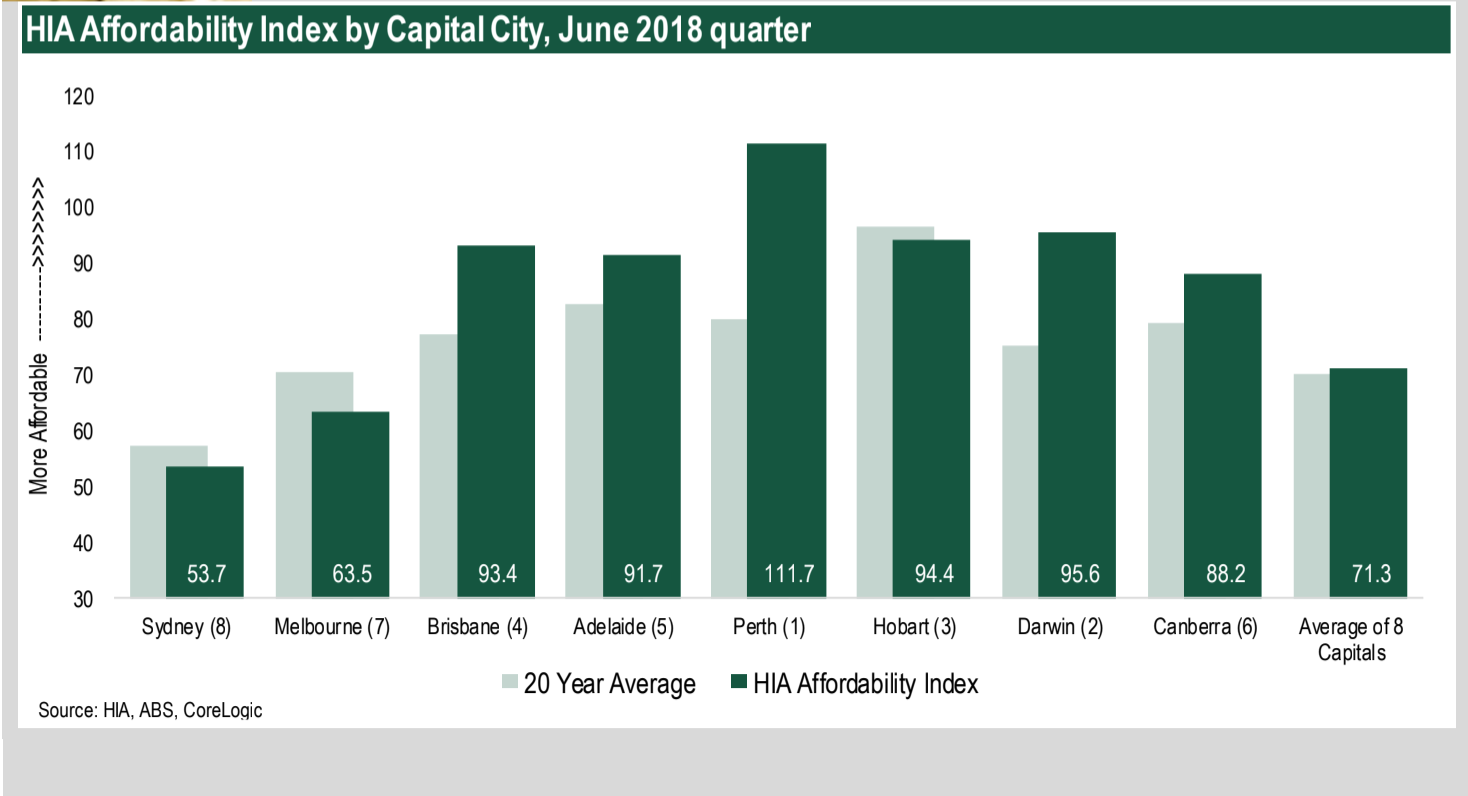 Source: HIA
Source: HIA
But the current plunge in house prices is unlikely to last for long, Hopkins warns.
“With an even balance in overall housing supply and demand in these key markets, the current downturn in dwelling prices is unlikely to be prolonged or severe.
“We could expect this downturn in prices to play out like previous cycles. They typically last 12 to 18 months, with the size of the fall modest relative to the immediately preceding expansion,” Hopkins said.
Ongoing fallout from the resources boom and bust cycles to thank for price plunge
Both rent and dwelling prices have been falling in Perth and Darwn for the last five years, amid the ongoing fallout from the resources boom and bust cycles.
While this is great news for renters and buyers in a market previously notorious for poor housing affordability, Hopkins warns it may be symptomatic of wider economic problems and in particular slowing population growth.
The weak economic conditions in both of these cities are seeing more people leave for interstate than are arriving, Hopkins says.
In particular population growth has followed these cycles and currently both cities are seeing more people leave for interstate than are arriving, resulting in spare capacity in their respective housing markets.
New home building activity has also fallen sharply in both cities as a result of the price declines, which risks causing an undersupply to emerge over the longer term in Perth and Darwin.
Groves told WILLIAMS MEDIA buyers are cautious right now.
“Trade-up family home buyers are lamenting they didn’t buy six months ago when the bottom of the market was apparent. Sellers who’ve been considering selling over the past few years are now cautious about coming to market too soon in anticipation of selling for more in the short-term future, especially down-sizers looking to maximise their capital-gains-tax-free benefit.
“Investors are likely to remain cautious until they see tangible growth which is likely to be towards the end of this year,” Groves said.
The best suburbs in Perth to invest in
According to data from REIWA, the rental yield for the Perth Metro region for houses currently sits at 3.6 per cent based on the overall median house rent price of $359 per week and median house price of $512,500.
This means on average, a typical property investor can expect to generate a 3.6 per cent annual return on their house purchase price.
REIWA says the suburbs of Bullsbrook, Medina, Parmelia, Armadale, Cooloongup, Maddington, Stratton, Camillo, Warnbro and Merriwa are house rental hotspots, offering investors the best return on their investment.
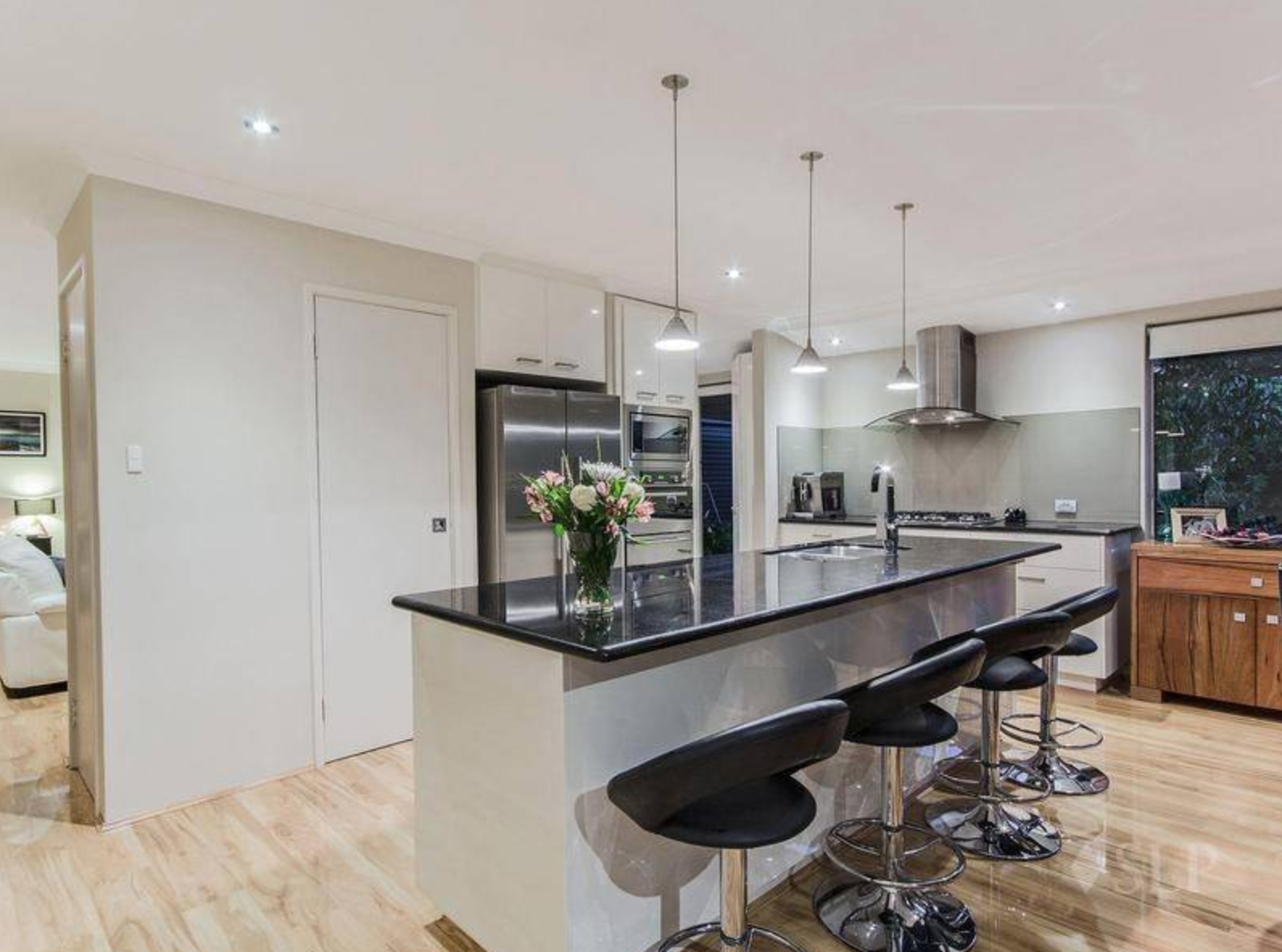 9 Bates Way, Warnbro available for rent through Property Osborne Park, as featured on Thehomepage.com.au
9 Bates Way, Warnbro available for rent through Property Osborne Park, as featured on Thehomepage.com.au
“Whilst the Perth property market is showing signs of a recovery in 2018, buyers and tenants remain the beneficiaries of the current environment, with a good supply of housing and rental stock to choose from at the more affordable end of the property market,” he said.
“With our local market on the cusp of recovering, now is the time for buyers and investors to take advantage of favourable conditions before our local market becomes less affordable,” Groves told WILLIAMS MEDIA.
Chief Operations Officer for Professionals Real Estate Group in Western Australia, Shane Kempton agrees.
“In the vast majority of areas in Perth, property prices are very low and buyers should now move quickly to secure a property before the recovery in the market gains further momentum to avoid buyers regret,” Kempton told WILLIAMS MEDIA.
View the Housing Industry of Australia (HIA) Affordability Index here.
Comments (0)
20 July 2018
By portermathewsblog
via houzz.com.au
Passionate about technology? A home-automation system is likely to be on your wish list – here’s what you need to know
In this practical series, we ask experts to answer your burning home and design questions. A premium home-automation system – also known as a smart-home system – allows you to control multiple functions in the home, such as lighting, heating and cooling, audio, security, door locks and even kitchen appliances – from a single device, be it a touch-screen remote control or an app on your phone or tablet, from wherever you are in the world.
Tempted? Here, Trevor Rooney, director of residential markets at Crestron, reveals everything you need to know about setting up a home-automation system in your own abode.

Home automation is all about convenience. Having the ability to control core elements in your home remotely, such as lighting, heating, entertainment and front-door access, can save time and make life run more smoothly.

Image: Crestron
What sort of things can a home-automation system do?
- Give you remote access to door locks so you can control who has access to your home when you’re not there.
- Switch lights on and off remotely or connect them to a timer or sensors, so they go on automatically (also great for security when you’re not home).
- Control heating or cooling so you can come home to a warm interior in winter or a cool one in summer.
- Give you remote access to alarms and surveillance systems; you will be notified if anyone approaches your home and can see who is at your front door. You can also switch surveillance on and off remotely.
- Change the television channel or switch the set on or off via voice command.
- Set your coffee machine to turn on automatically in the morning (it will even brew you a cup before you get out of bed).
- Automate your pool and pond cleaning, with the ability to adjust settings from your smart device while you’re not at home.

For even greater convenience, you can pre-determine the settings on your automated system for lighting, heating and entertainment to suit different situations. For example, you could set the system to control various elements simultaneously, so that when you go to bed it turns off all the inside lights, switches on the security camera at the front door, adjusts the kids’ night lights, and switches off the heater – all with one swipe of your smart-screen remote or an app on your phone.

Can automation cut my energy bills?
Absolutely. Here’s how:
- Accidentally left your lights on when you left the house? With home automation, you can switch lights off from wherever you are.
- Connecting blinds to a sensor-controlled system means they’ll close automatically when the temperature reaches a certain point, keeping your home cooler and reducing air-conditioning costs. You can also keep your home naturally cooler by setting up an automated shading system for overhead or exterior window shades.
- No more overheating your home unnecessarily; by installing a smart thermostat, your heating will switch off automatically when the temperature reaches a certain level.

How is a home-automation system different to a smart-home assistant?
Devices such as Google Home and Amazon Echo are great for convenience. They can perform simple tasks by using voice recognition, such as checking the weather, reading out the day’s headlines or performing Google searches.
A premium home-automation system is far more sophisticated. It allows you to automate several different devices through one simple-to-use interface or an app on your phone. So, instead of having five different remote controls to manage your various devices, you just have the one platform, which can be controlled by voice or touch.
 Image: Crestron
Image: Crestron
How does voice control work?
Systems such as those at Crestron can be connected to Amazon Echo’s Alexa Voice Service to enable voice control. This allows you to give voice commands, such as ‘Alexa, turn off the kitchen lights’ or ‘Alexa, raise the temperature in the family room by five degrees.’
You can also control multiple systems simultaneously through a number of preset scenes. For example, in the morning you could say ‘Alexa, tell Crestron to activate Morning Theme,’ and the blinds will slowly open, the lights will switch on and a warm shower will start running in the bathroom. Or, if you want to set the mood for an intimate dinner party, simply say, ‘Alexa, tell Crestron to activate Intimate Dinner.’ The dining room lights will dim, the window coverings will adjust and soothing music will play from your speakers.

What should I expect to pay?
This depends on the level of automation you want. Crestron’s new PYNG 2.0 platform (available later this year), which controls audio/visual functions, such as the television, Foxtel, Apple TV and Sonos, starts from around $3,500. This would include the processor and a touch-screen remote control. Incorporating lighting and shading solutions into a home-automation system would see this cost rise to around $10,000, depending on the size of the space.
A fully connected smart-home system starts from around $25,000, depending on the size of the property.

Can I retrofit an automated system?
It’s best incorporated during the building phase. However, it’s certainly possible to install after the build.

Comments (0)
16 July 2018
By portermathewsblog
via therealestateconversation.com.au
Be a smart investor and have a loan strategy.
You have saved away and have enough cash to consider purchasing property as an investment. Like any purchase, it is a huge one so having a strategy in place will keep you focused and ensure that you are doing as much due diligence as you can for a successful investment.

Not many successful investors became successful by accident – we recommend you start by seeking professional financial advice to really determine what your borrowing capacity is and how realistic your investment is.
Debt does not have to be scary, unless it is the wrong type of debt. In an ideal situation, you will want your debt to be productive and if you have planned how your cash flow will be affected, then you can have a clear understanding of how purchasing that next investment will affect your lifestyle. Productive debt in our eyes can be used as an advantage to buy an asset or generate income such as rental income.
Understanding your loan strategy
If you are looking to invest in multiple properties, we think it’s important to understand the short and long term perspective of property ownership. You have to think about how this next loan or investment is going to influence your life and your cash flow as well as what the situation might look like with your third or fourth investment. We say this as it can really make a difference in the type of property you purchase in the first place.
Think about how positively or negatively geared loans will affect what you purchase or how you live in the future. It may seem odd to be thinking so far in advance, but we think it is important to really understand your financial situation and also the results you would like to achieve as a property investor.
This is where we think it is important to be surround by the right advice. The right financial advisor for you will be able to help you plan the various scenarios to suit your end goal – after all everyone has different goals in their lives.
Comments (0)
12 July 2018
By portermathewsblog
via domain.com.au
With Australia’s major supermarkets banning the plastic bag it’s a good time to get on board #PlasticFreeJuly.

The initiative, whereby people pledge to reduce plastic from their lives for a month, is a great opportunity to learn about plastic-free eco alternatives beyond the tote bag.
Founder of the Plastic Free July Foundation, Rebecca Prince-Ruiz, says while plastic is an extremely useful material the fact it’s designed to last forever causes problems for the environment.
One of the biggest impacts is, of course, on wildlife. But plastic is a huge problem for humans too. Plastic bags contain a cocktail of chemicals that leach into the environment and increase up the food chain. “The UN Environment said it’s one of the greatest environmental challenges of our time,” Prince-Ruiz says.
Images of the Great Pacific Garbage Patch might suggest it’s a problem happening elsewhere. “CSIRO research found plastic in every beach in Australia,” Prince-Ruiz says. “And because we have high concentrations of wildlife, we’re the area in the world where seabirds are most at risk.”
Only 9 per cent of all plastic we’ve made on our planet is recycled, according to Prince-Ruiz. “This is a problem we can’t recycle our way out of. We need to rethink our use of this material.”
She suggests eliminating all single-use throwaway plastic such as plastic lollypop sticks, bottle caps, drink bottles and bags. “These are what we’re finding in our environment. It’s not about being perfect, or a competition. It’s about saying ‘hey, I’m going to try’.”
Frustration with sourcing plastic-free products led Sydney-based Lottie Dalziel to found an online marketplace where consumers can purchase plastic-free products all in one place. Launched in March, banish offers more than 460 products across 22 eco-friendly and cruelty-free brands, and is part of a growing movement to rein in the problem of plastic waste.
From the quirky and old-fashioned, to the funky and plain brilliant, here’s a glance at what’s out there to help you replace plastic in the home in July and beyond.
Kitchen
Beeswax wraps
Use to replace cling wrap. “It comes in funky colours and is a piece of fabric coated in beeswax,” Dalziel says. “Using the heat in your hand, it moulds. You just unwrap and rinse in cold water and use again.”
 Beeswax wraps can replace cling wrap. Photo: Beeutiful.com.au
Beeswax wraps can replace cling wrap. Photo: Beeutiful.com.au
Lunch skins
The lightweight fabric bags come with a velcro closure and replace plastic lunch and snack bags.
Reusable produce bags
“Take these shopping with you and put your fresh produce into them, Dalziel says. “Keep them in their bags and it helps separate them in your crisper.”
Knitted and fabric cleaning cloths
Washable and re-usable, these replace your Wettex or Chux.
Coconut fibre scourers
A trendy accompaniment to your au naturel wooden chopping board.
Reusable straws
Choose from bamboo or stainless steel options.
 Reusable bamboo straws. Photo: Banish.com.au
Reusable bamboo straws. Photo: Banish.com.au
Tea strainers
Combine the old-fashioned metal tea strainer with loose-leaf teas to banish plastic from your morning cuppa.
Bamboo takeaway cutlery
Chuck these in your lunchbox or buy in bulk for parties instead of the plastic variety.
Dishwashing tablets
Add a tablet to your dishwasher compartment and use as normal. Lil Bit sells a Cajeput-scented, Himalayan salt tablet.
Dust brush
Eco-Max offer a handmade and biodegradable recycled timber and coconut fibre dust brush.
 Himalayan salt dishwashing tablets. Photo: Lil’ Bit
Himalayan salt dishwashing tablets. Photo: Lil’ Bit
Bathroom & personal hygiene
Shampoo and conditioner bars
Handmade, full of yummy ingredients and sure to start a trend. Get them at Lush and Beauty and the Bees.
Deodorant paste
Scent up with this option from Good & Clean. A portion of profits goes to your conservation project of choice.
Bamboo toothbrushes
“Cut off the bristles and the bamboo is completely biodegradable,” Dalziel says.
Dental lace
Made from Mulberry silk and mint-flavoured, it comes in it’s own refillable glass and stainless steel container. Get it at Ecostainable.
Metal razors
Built to last, you probably have one in your cabinet. For something new and nifty try the Parker Safety Razor.
 100% natural deodorant paste. Photo: Good & Clean
100% natural deodorant paste. Photo: Good & Clean
Menstrual cups
Made with soft, medical-grade silicon, menstrual cups are used like tampons. Find them at Banish and other stockists.
Biodegradable cotton buds
Go Bamboo sell biodegradable bamboo cotton buds.
Tooth and gum powder
Natural ingredients mean this is also better for you. Buy it online at Banish.
Laundry
Soap nuts/soap berries
The saponin-rich shells of the Sapindus Mukorossi tree nut produce foam when mixed with water. “Add about seven nuts to your washing load in a bag,” Dalziel says. (Micro-plastics in traditional detergents end up in the world’s waterways).
Toilet
Toilet bombs
Pop one in the toilet for five minutes, scrub and flush away. Get them at Lil Bit.
Waste
Biodegradable trash bags
Hurrah. These do exist! Find them online at Biotuff and Flora & Fauna.
 Biodegradable cotton buds. Photo: Shop Naturally
Biodegradable cotton buds. Photo: Shop Naturally
Comments (0)
06 July 2018
By portermathewsblog
popsugar.com.au
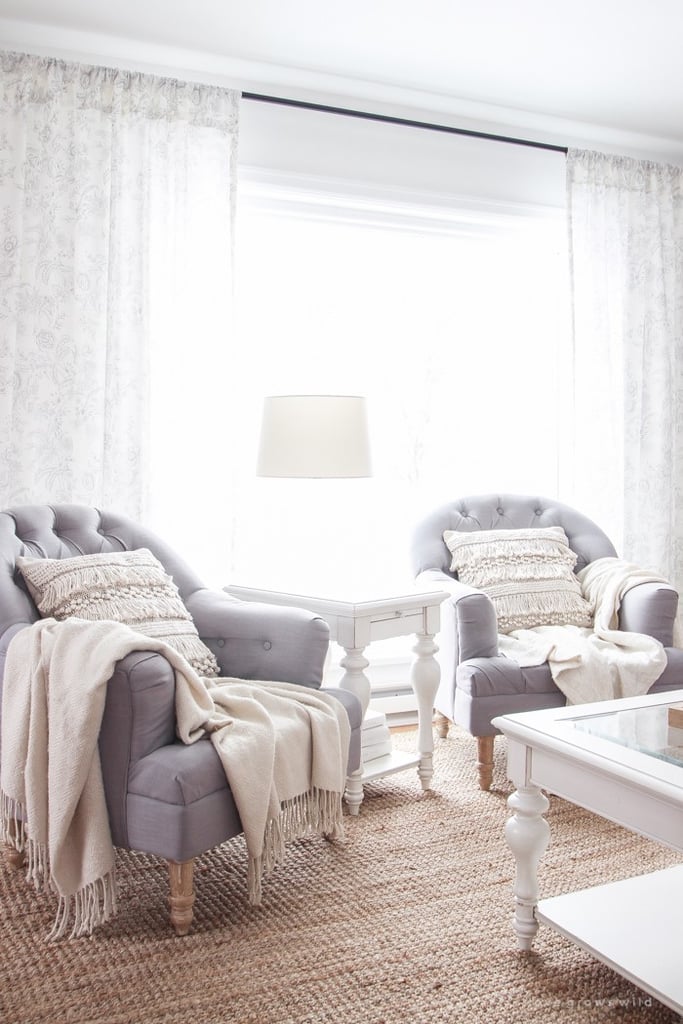
Image Source: A House in the Hills
If there are rules that you as a renter must follow, make it these 10 commandments. Because, while paying your rent on time is important, so too is making sure your place is personalised and stylish. Working within the boundaries of your landlord, it’s little things like a new light fixture that will make an impact without costing a lot of time or money. And, the best part about this entire list is that you’ll leave with your security deposit intact once it’s time to move up and on.
- Thou Shalt Add Storage
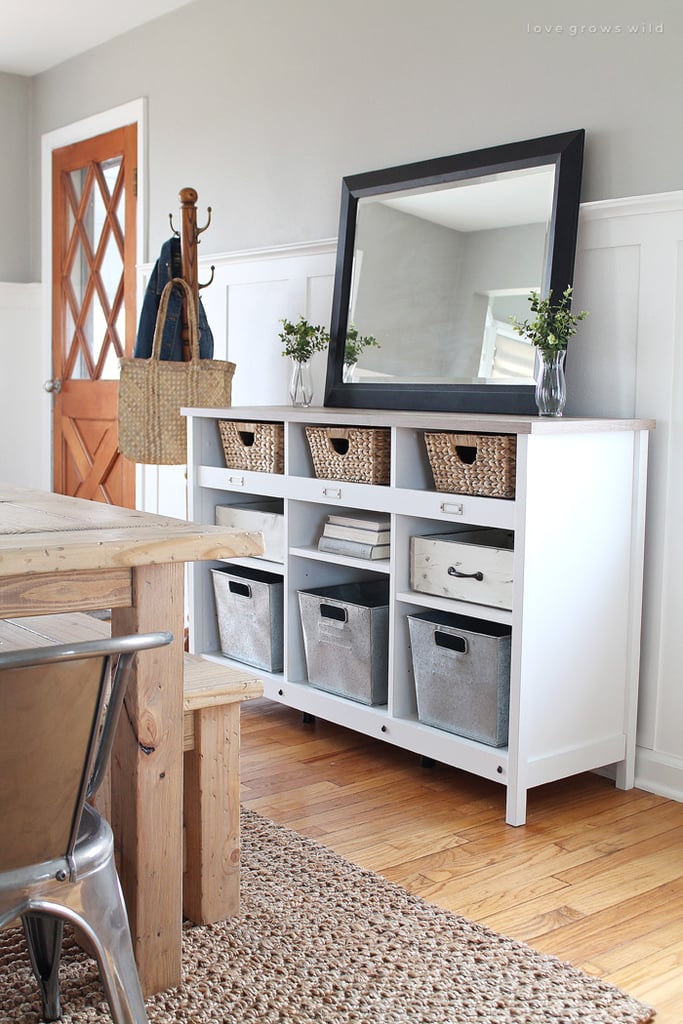
Let’s get real, custom cabinetry is not an option if you don’t own the place. Since rentals usually lack storage, add your own with affordable Ikea bookcases, simple shelves, or these organising solutions.
- Thou Shalt Change the Hardware
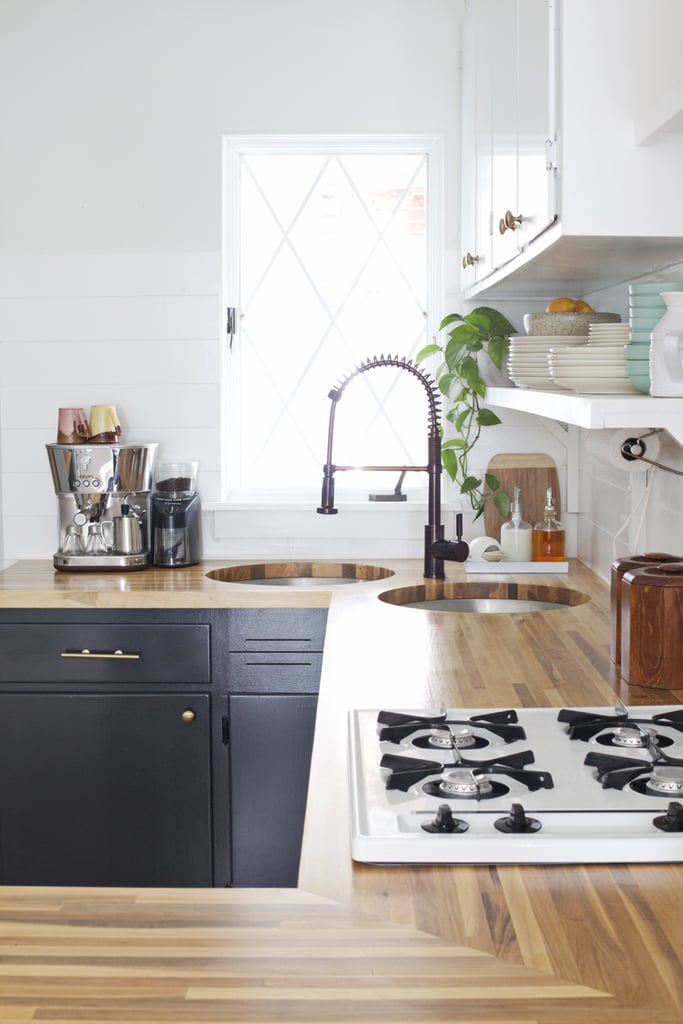
Rental hardware is basic . . . your style, not so much. Switching out cabinet pulls and bathroom hardware will make a huge difference. Just remember to keep the original pieces to swap back in before moving out.
- Thou Shalt Ditch Vertical Blinds
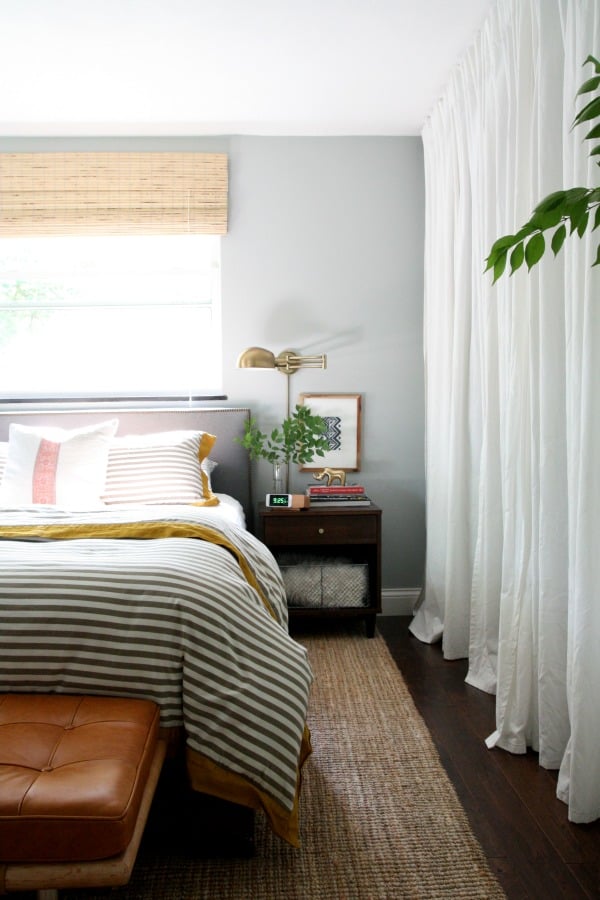
Image Source: Dana Miller for House*Tweaking
They are the ultimate decorating sin! To prevent your space from looking like a hospital room, take them down or hide them under curtains. Again, don’t toss — they’re essential if you want your security deposit back.
- Thou Shalt Line Cabinets
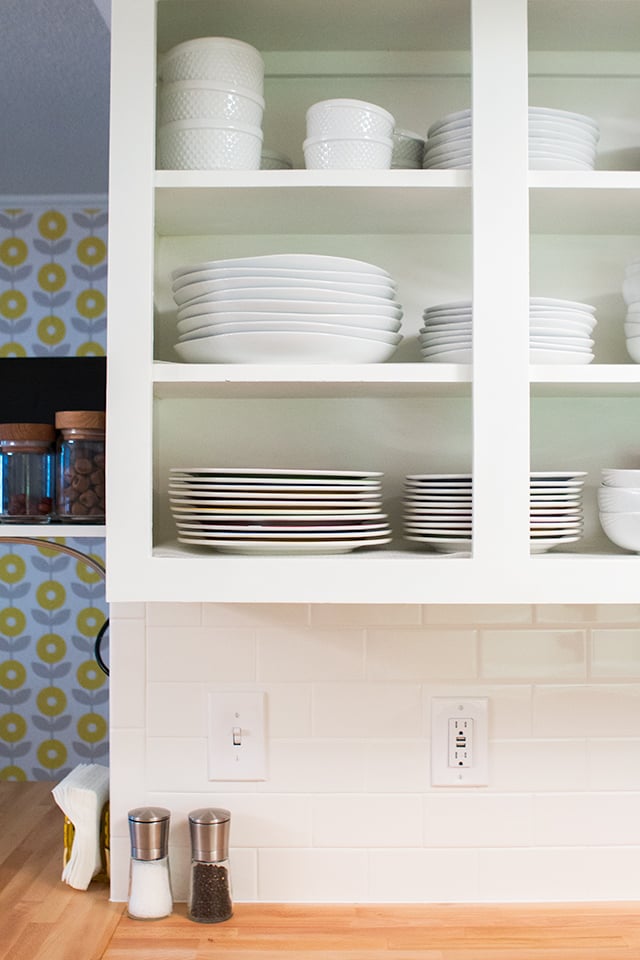
This might seem trivial and a bit annoying, but lining your cabinets is a must. Not only will it make your kitchen look clean, but also it will mask worn and grungy cabinets without having to paint. Adhesive liner works, but a softer grip liner is better because it’s easy to install; it will also prevent glassware from chipping.
- Thou Shalt Accessorise Like Crazy
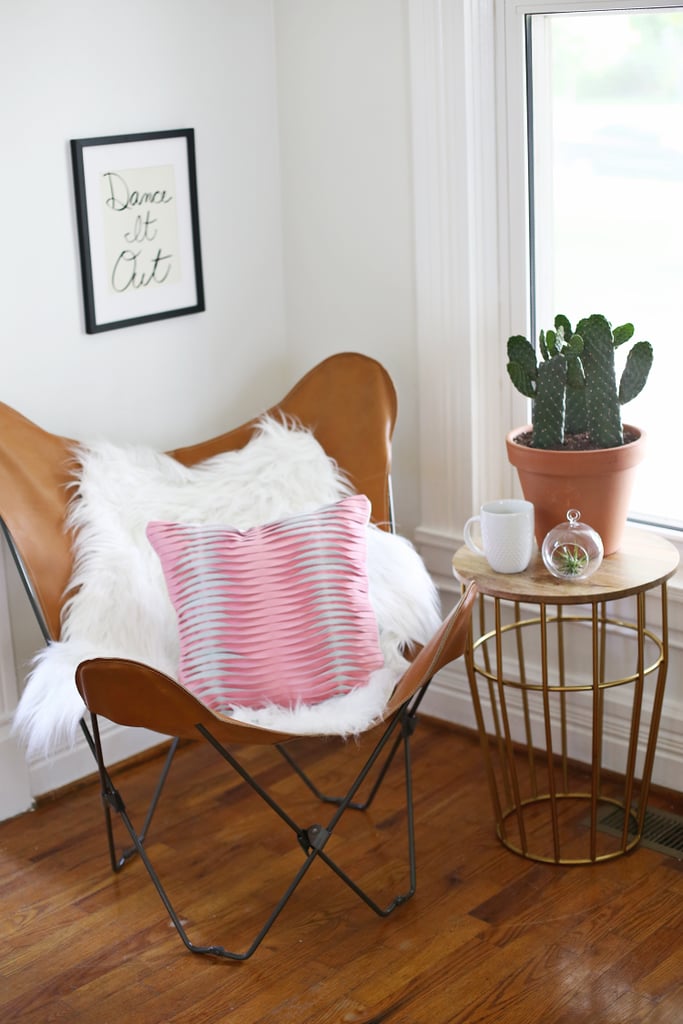
It’s true, and that’s the only way you’re going to get a truly personal space. Go to town with throws, pillows, and accents that reflect your style.
- Thou Shalt Avoid Wallpaper
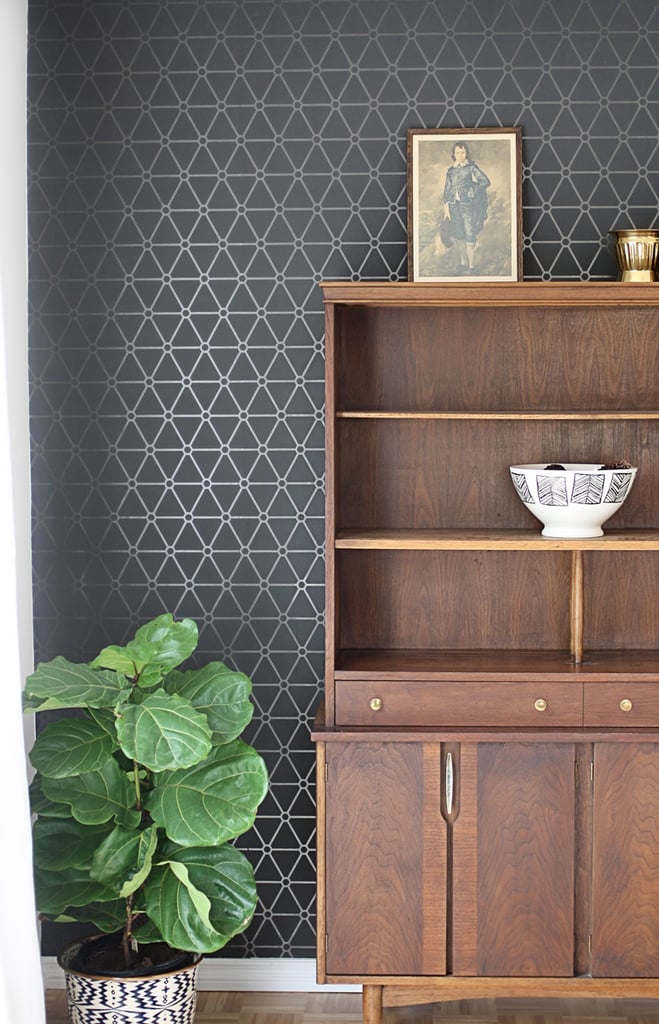
Well, in most cases. Sure it’s stylish, but in all honestly, wallpaper is really inconvenient to remove, especially if you won’t be in your place for long. If you love the patterned look, consider the removable wallpaper seen in this studio or these alternative wallpaper ideas.
- Thou Shalt Hang Art
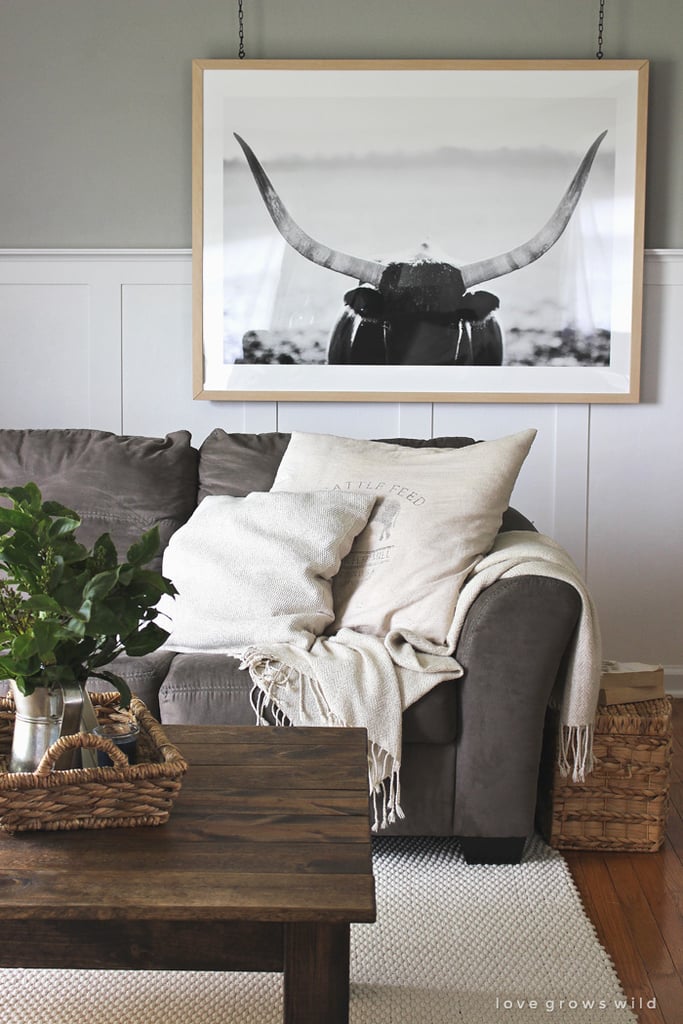
Image Source: Love Grows Wild
No excuses — get your art on the walls! Patching up a tiny hole come move-out day is nothing compared to the impact it will make on your space. No need to create a full-blown gallery wall either. Try hanging one statement piece and resting photos on a mantel or shelf, similar to this home.
- Thou Shalt Invest in Rugs
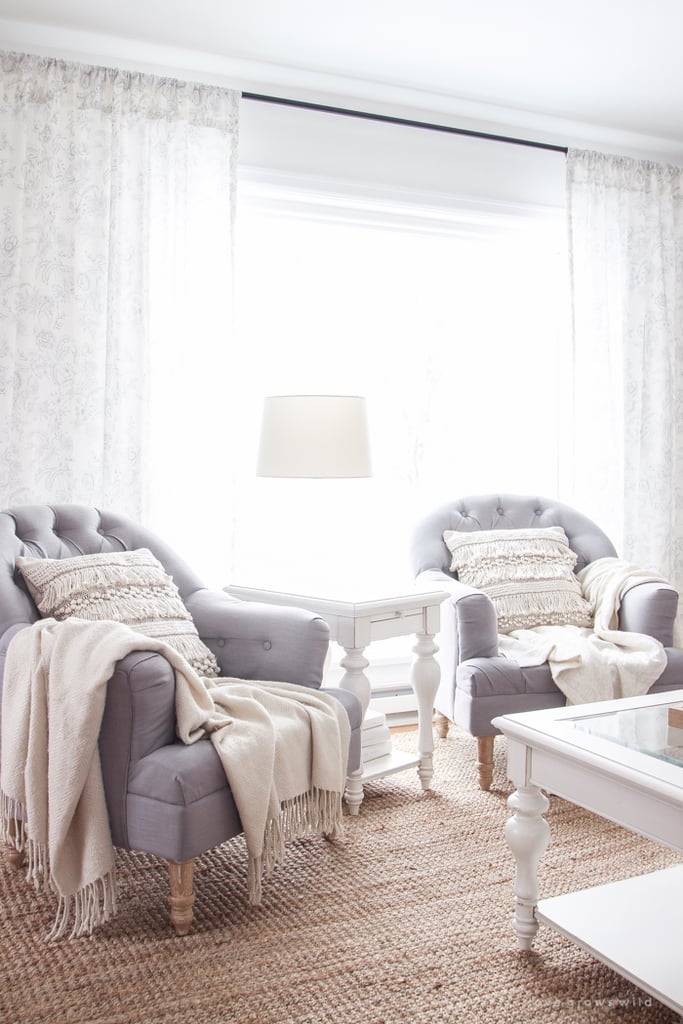
Especially if your place has carpet! Rugs are an easy way to cover up that not-so-cute carpet and can be packed up with you come your next move. Rugs are also a necessity to keep noise down, especially in older apartments with wood floors.
- Thou Shalt Emphasise Lighting
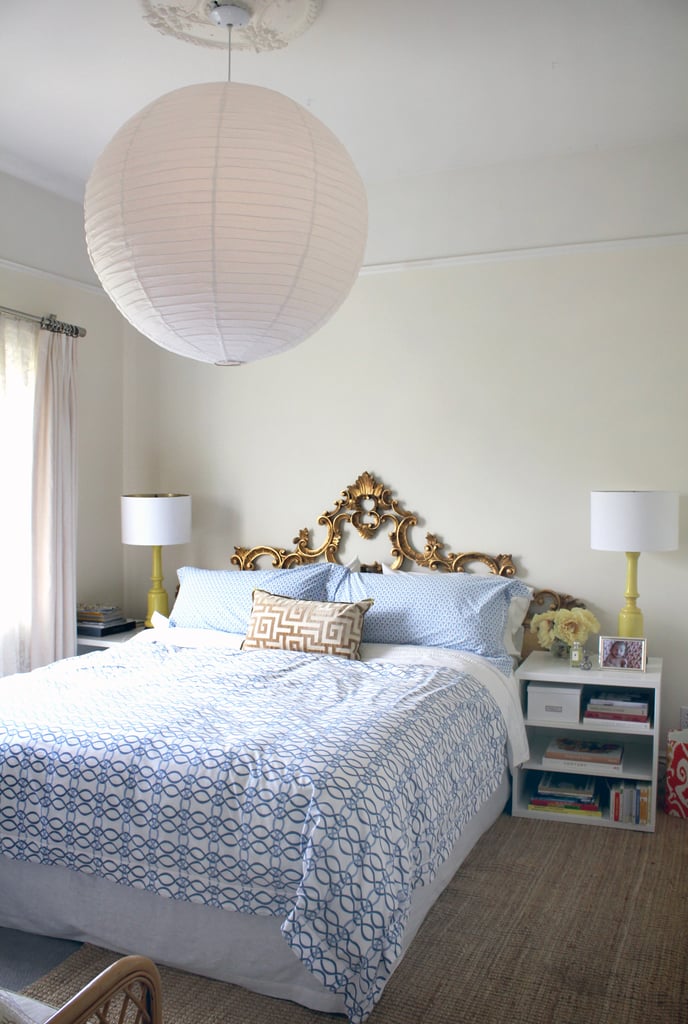
Image Source: POPSUGAR Photography
This is another trick that many renters often overlook. Take it from HGTV stars Anthony Carrino and John Colaneri who suggest you use lighting to set the tone and make an impact in a rental. Get creative with floor and table lamps that can easily be moved from place to place.
- Thou Shalt Make the Most of Plants
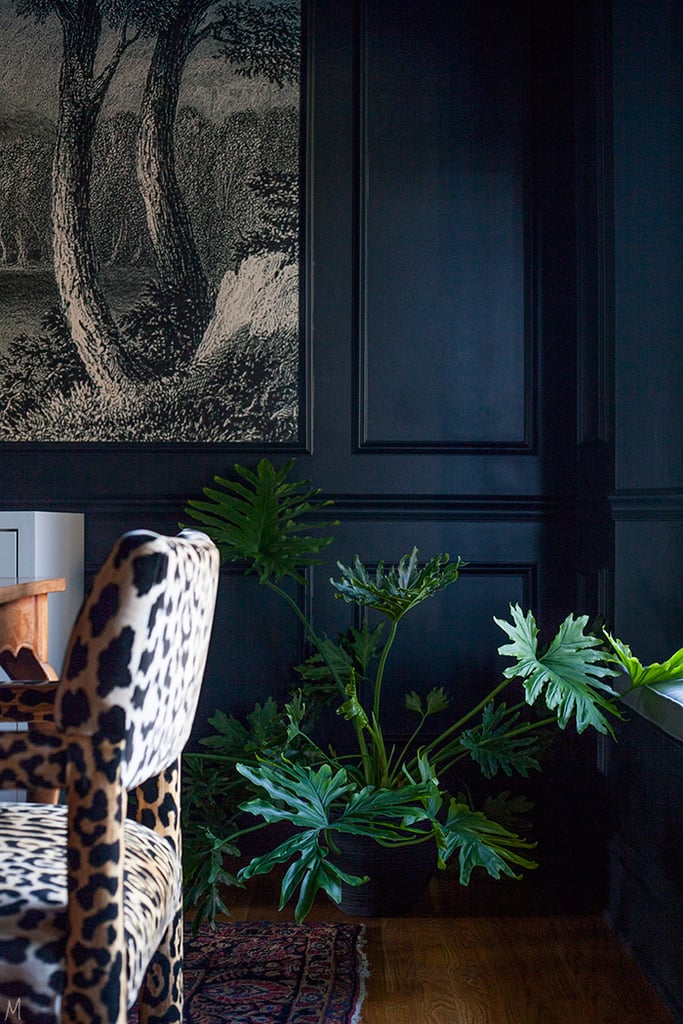
No yard? No problem. Pots are a great way to achieve the bohemian jungalow look or even have your own urban garden. The best part is you won’t have to fret about leaving any of them behind.
Comments (0)
02 July 2018
By portermathewsblog
via houzz.com.au
An interior designer reveals the essential rules for achieving a perfectly balanced interior.
Have you ever walked into a room and it just felt right, but you couldn’t put your finger on exactly why? Chances are that proportion was a key factor – whoever designed the room would have paid careful attention to getting the size and scale of the furniture and accessories just right for the space.
We talked to Rohan Smith, senior interior designer at Coco Republic Interior Design, to find out how you can create beautifully proportioned rooms in your own home.
 Why does proportion matter?
Why does proportion matter?
Because furnishing a room is more involved than simply placing a few pieces of furniture in a space – some fundamental rules of design need to be considered, one of the most important being proportion. You need to consider not only the proportional relationship between the pieces themselves, but to the space that contains them.
A room looks and feels right when the proportions are good, and there’s neither too little nor too much furniture. If furniture is too big, the flow of the room can feel awkward. If it’s too small, the space won’t feel cosy or inviting.

What are the most common mistakes people make?
Having all the furniture and furnishings in a room the same height, colour and style. The room ends up looking dull and static. This is easily rectified. A tall floor lamp, for example, can add some height to a corner, while providing a lovely ambient light source. A tall cabinet or bookcase can add visual interest as well as handy storage.

How do you assess proportion?
One of the easiest ways to assess whether a sofa, dining table or bed will suit the size of your room is to map it out with newspaper and lay it on the floor. This will give you a sense of how much floor space the piece will take up. Living with this template for a few days will give you a definite feel for how it will be to live with the piece.
A more technical method would be to use the Houzz Sketch tool or an app such as Magicplan. You simply take photos on your smartphone, which the app then translates into a plan of the space. You can then add objects, annotations and attributes to create a complete plan of your room.

What proportions do you need to consider for a living room?
Living rooms can be tricky to get right, especially in open-plan spaces.
If the room is your main television viewing space, then you’ll need to factor in technology as well as furniture. Is the TV too big for the room? Is the entertainment unit balanced with the size of the TV, and the room as a whole? A common mistake is to have a small entertainment unit with a large TV – it should be the other way around. Also, consider whether the sofa is the correct distance from the TV for viewing comfort. It should be about 2.5 times the screen width in distance away, and no more than 5 metres. The centre of the TV should be about 1 to 1.1 metres from the floor.
A large sofa and a small rug also look unbalanced.
For living rooms, the furniture arrangement should be conducive to conversation. Two sofas facing each other or a U-shaped arrangement are ideal. The coffee table should also be the right height for the sofa. You should be easily able reach the coffee table from a seated position so you can rest a cup of tea or a glass of wine.

What about a bedroom?
One of the main considerations in the bedroom is the size of the bedside table in proportion to the bed. For a king-size bed, go for a large-scale beside table of about 70-90 centimetres in width, depending on the size of your bedroom. For a queen-size bed, a bedside table of around 50-60 centimetres is ideal.
Bedside lamps should also sit proportionally with the bedside table and bedhead. Again, for a king-size bed, a larger lamp will work best.

Are there any golden rules for hanging pendant lamps?
When pendant lamps are hung too high or low, they can look completely out of place in a room. You need to consider the size and style of the pendant, the ceiling height, and the space in which they will be hung.
Despite these variables, there are still a few hard-and-fast rules that can help when hanging pendants. For kitchen benches, hang lights around 70-80 centimetres above benchtops. This height allows the pendants to provide a useful light source for working, without intruding on the line of sight from the kitchen to the adjoining living or dining room.
For your dining table, sit pendants at 75 centimetres above table height to create an intimate and cosy dining space. For entries and hallways where people will be walking beneath the pendant lights, space allowing, the ideal hanging height is 240 centimetres from floor level.

What about hanging art?
Choosing artwork that is the wrong scale for a room is a common mistake, with most people erring on the small size. Checking to see whether a gallery will allow you to bring a piece home on approval is the best way around this. If you fall in a love with a piece that is too small for your room, have it re-framed with a larger mount.
Another common mistake is to hang artwork too high on the wall. If a piece is hung too high it will have no connection to the furniture below it, and if it’s above eye level it can ruin the look of a room.
Ideally, artwork should be hung so that the centre of the piece is at average eye level or about 150 centimetres from the ground. In a dining room you might want to hang the pieces slightly lower to factor in the seated viewing height.
Also remember that having some negative space is important. Leaving some walls bare not only puts more significance on the pieces you’ve hung, but creates a calmer feel in the room.

And rugs?
Rugs are a great way to bring a furniture grouping together. They provide a border for furniture to sit on and can help you create individual dining and living zones in an open-plan room where furniture has a tendency to ‘float’. Ideally rugs should sit under the front legs of the sofa and occasional chairs – this helps visually link the pieces together.

What about the proportions for colour in a room?
When making your selection, consider the 60-30-10 rule, which is a timeless decorating principle that can help you create a balanced colour scheme. Your 60 per cent is the main colour for a room, which anchors a space and provides a backdrop for the other colours. In a living room this would be walls, sofas and rugs.
Your 30 per cent is the secondary colour, which would encompass occasional chairs, bedlinen, window furnishings and occasional furniture. It should support the main colour, while being different enough to set it apart and give the room interest.
The final 10 per cent is your accent colour. For a living room, this would include scatter cushions, decorative accessories and artwork. For a bedroom, think throw pillows and artwork.

Do the rules of proportion apply to the little details too?
Keeping an eye on the proportion of decorative accessories is another important consideration. One large bowl on a dining table might be all you need in that space to create drama. Conversely, combining small objects with other similar objects can create just as much impact. A collection of ceramic pots makes one big statement, whereas a few pots scattered about will look disconnected and out of proportion.
Lamps should not overshadow the table on which they are placed. A large lamp on a slender table, for example, would appear top heavy. Too much variety of scale can cause visual chaos in a focused area, such as a bookshelf. Instead, group items of similar type and scale together, and line up like-sized books for a balanced look.

Comments (0)
25 June 2018
By portermathewsblog
via therealestateconversation.com.au
Many investors steer clear of vacant land because they mistakenly believe they can’t claim interest repayments on it.

In fact, the biggest thing that most accountants get wrong when advising clients on vacant land is that the interest component on it isn’t tax deductible.
I’ve had many arguments with many accountants about this topic over the years!
The key component is the clear intent to build a property within a reasonable timeframe. If the investor was audited, the investor would need to prove that the timeframe – whether it’s a few weeks or months – was necessary to enable to construct the investment property.
I’ve heard this ‘non-advice’ so many times over the years and that’s why it’s so important that you get advice from a property accountant with a strong understanding of the relevant legislation.
Which land is best?
With vacant land, there are a number of different strategies that you could implement.
The first one is residential land that is being carved up by a developer, but you buy before the titles for each individual block have been registered. Effectively, you’re buying land off the plan, but it’s important to understand that there are pros and cons to this strategy.
The pro is that if it’s in a high-demand area and you’ve bought during the early stages of development, you tend to make some money. You also generally only need to put down a few hundred or thousand dollars as the deposit. Naturally, because you are very much dependent on how fast the developer can register each block, you’re at the whim of the market, which can be a con. For example, in my portfolio, I once bought 18 blocks of land that were not yet registered.
In fact, registration wasn’t supposed to happen for another two years. However, it happened in just eight months and I wasn’t ready. So all of a sudden I had 18 parcels of land that I had to settle on, but I didn’t have my finance organised.
After discussing it with the developer, I ended up settling on four of them and he released the other 14 back to the market, which worked out well for him because the market had improved.
So, if the land is registered well ahead of time, you can be left scrambling.
On the other hand, if registration takes longer than expected, the market could have slowed down. Like any off-the-plan project, you only need one bad valuation to negatively impact
the entire subdivision or development. Plus, everyone will be building at the same time, which means you’re competing for trades and will likely be finished at the same time, too, and that means a strong likelihood of softer prices.
What about greenfield and infill sites?
When I say greenfield sites, I mean blocks of rural land that you intend to rezone for residential usage. Now this is a strategy for more advanced investors because there is more risk as well as a higher financial component required for earthworks and approval costs. Greenfield sites can be bought for an affordable price, but if you can’t get the subdivision approved you need to have the money behind you to fight all your way up to the Environment Court if necessary.
A better strategy is to target infill sites within already established residential areas.
In this scenario, you buy a larger block of land, usually with a house on it, to carve off the land at the back or the side to sell as vacant or with a new property on it.
The other option is to subdivide, then construct a new dwelling and then keep both. Infill developments can also lean towards knocking the old house down, splitting the block into two and selling the vacant land, or building two houses or even multiples. It must always come back to whether there is a market for your project and whether the numbers add up, because you must take into account all of the costs on the way in and on the way out.
That way you can make an educated decision whether to keep holding long term or take your profits to invest elsewhere.
Whichever strategy you choose, you must do your figures on the worst-case scenario to see if it adds up. That’s because land generally has a lower, or no yield to start off with, which means your holding costs can be higher than with a house, for example.
At the end of the day, vacant land as a strategy, does work. You just need to have your eyes wide open to ensure your figures are correct and you must understand that it might be a while before income rolls in.
Finally, it goes without saying that you must get tax advice from a specialist accountant who understands property. If you don’t, you could end up with pockets just as vacant as the land you’re investing in.
Comments (0)
14 June 2018
By portermathewsblog
via domain.com.au
If you’ve ever bought a heating appliance only to find it woefully inadequate for the task at hand, you need Christian Hoerning’s advice. A technical expert at EECA Energywise, he tells us how to stay toasty without getting burned by the end-of-month bill:
For larger rooms you want to heat regularly, it’s worth paying a bit more upfront for a fixed heater with lower running costs and more heat output than a small electric heater can provide.
Electric heaters may be enough for smaller rooms and rooms you only heat occasionally.
 Hang on the wall electric fires can be two or three sided and have floating shelves such as those in the Skope Trento Suite from The Fireplace. Photo: The Fireplace
Hang on the wall electric fires can be two or three sided and have floating shelves such as those in the Skope Trento Suite from The Fireplace. Photo: The Fireplace
Avoid unflued gas heaters (either portable or with pipes fixed to the walls) that release toxic fumes and moisture, and open fires that are draughty and inefficient.
Match the size of your heater to the space. An oversized or undersized heater won’t work effectively, and can cost more to run.
To minimise the environmental impacts, choose a heating option that uses renewable energy, like wood, wood pellets or electricity (which is about 80 per cent renewable on average).
 An Escea outdoor cooking fire completes this outdoor kitchen by Dravitzki Brown Architecture, it comes with an adjustable cooking plate for flame grilling. Photo: Escea
An Escea outdoor cooking fire completes this outdoor kitchen by Dravitzki Brown Architecture, it comes with an adjustable cooking plate for flame grilling. Photo: Escea
Choose the most efficient model for the job, and use and maintain your heater properly – for example, have heat pumps serviced and regularly clean the filters.
Fireplace: The expert advice
One reason wood fires have fallen somewhat out of favour is increasing clean air regulations in our cities. But wood is a renewable resource – and a real wood fire has romance on its side. So if you’re a sucker for the crackle and the ritual of stoking the logs, look for one that is clean air approved for urban areas.
“For large, open-plan rooms you can’t go past double-sided fireplaces as room dividers. They visually connect two spaces, and add intimate zones to the setting.” – Alex Hodge, Escea.
 Escea’s double-sided DX1500 gas fireplace adds its magic to both the kitchen and living space of this home, designed by Product X Architecture. Photo: Escea
Escea’s double-sided DX1500 gas fireplace adds its magic to both the kitchen and living space of this home, designed by Product X Architecture. Photo: Escea
“Electric fireplaces, using sophisticated LED technology that mimics flames with different effects and colours, are no longer confined to in-wall options. Products such as the Gazco Skope Outset fires can be installed as a two- or three-sided fire so they make a stunning visual centrepiece.” – Geoff Dunn, The Fireplace
“A fireplace in the bedroom is the ultimate luxury, but definitely a better option with gas due to its on/off button convenience and controllable temperature. No one likes to sleep in a room that’s too hot. Escea’s multiroom DX Series has the ability to duct heat into different rooms – a good option for bedrooms as 90 per cent of the heat is ducted, not radiant. – Alex Hodge, Escea
“A fireplace in an outdoor room will add value to your home and extend your living space. Fireplaces provide a central social hub and make alfresco dining a lot more inviting. Escea’s EF5000 outdoor gas fireplace is an easy-to-install option that doesn’t need a flue, so it’s great for balconies and roof gardens that have views you don’t want to obscure.” – Malcolm Burton, Stoke Fireplace Studio
 If you love the authenticity of wood fireplaces but live in the city, you’ll need one that’s clean air approved. Stovax Studio wood fires can be in-built or freestanding. Photo: The Fireplace
If you love the authenticity of wood fireplaces but live in the city, you’ll need one that’s clean air approved. Stovax Studio wood fires can be in-built or freestanding. Photo: The Fireplace
Other ways to heat
Sarah Moore from Rinnai says whole home heating (or central heating) is can be unusual, as most of us are used to spot heating just the living area. “Whole home heating allows you to have a warm, comfortable dry house and we have seen strong growth in this space over the last few years. We expect this trend to continue as more people understand the benefits of heating their whole home.”
Fan heaters are ideal for small spaces such as home offices or powder rooms that measure around 15sqm. Installed in a bathroom, they also reduce steam and should be turned on before you take a shower.
Wall mounted and perfectly quiet, convection panel heaters are a good choice for hallways and bedrooms. Choose one with a timer and an accurate digital thermostat.
Radiant heaters are for personal warmth; if you work from home in an open-plan space you could possibly do with one in the depths of winter but they will make no difference to the ambient temperature of the room.
Don’t forget to move the heat outdoors. A 2400W electric outdoor patio heater, for instance, provides heat for areas up to 10m away.
Comments (0)
11 June 2018
By portermathewsblog
via therealestateconversation.com.au

Buying your first property is hard, so let’s make it easier for you.
Congratulations! You have decided to take the plunge, you have done some reading on what the various responsibilities when it comes to being a homeowner, you have spoken to the bank and have an idea of how much you are able to afford.
These steps take some time so we are here to encourage you to take the next step in home ownership. We know it’s a little bit nerve wrecking and a little bit scary, but we have compiled some advice from our in house experts to help you with this exciting time!
Looking for affordability without compromising on location
For many of us, your first home is not going to be your forever home. We recommend taking a holistic approach to purchasing property. Even if you are going to be living in that property, look at it as an investment as well.
For those first homebuyers who do not want to compromise on space, you may have to look further out depending on your budget or look for townhouses or terraces. If you are looking to keep more of your lifestyle, an inner city apartment may be the apt living situation for you.
What we emphasise is buying smart and seeing your home purchase as more than just a living situation but a step in growing your portfolio. You might want to ask yourself “How much rent will I get for this apartment?” or “What has been the capital growth in the area over the last few years?”.
We think asking these questions will not only give you peace of mind if you have to move out and rent or sell your property, but it is also how many people start their property portfolio. The first one does not have to be picture perfect, but it helps if it is a sound investment.
Location and amenities
The building, home or internal features are not the only things that you should consider when you buy. Are you in a desirable school catchment zone, are there amenities or transport facilities planned in your area or has a new shopping centre been planned?
Looking at the amenities and area around you is particularly important, as they are great financial health indicators that the area you are looking to buy in has infrastructure and amenity to attract people to live there.
Look on suburb out from your dream location
Looking for undervalued suburbs next to the pricier areas is always a something we recommend to our first home buyers – over time, population growth and gentrification will mean that there will be capital growth in your area.
It’s always good to also look at areas with employment growth as this will increase demand for homes in that area. Finally, do your research. It takes time to go through all the listings in the area you love and view the various prices they get sold for but it’s all worth it when you know you are on to a great purchase.
Comments (0)
06 June 2018
By portermathewsblog
via reiwa.com.au
 The latest REIWA Curtin Buy-Rent Index for the March 2018 quarter has revealed it’s the best time to buy in Perth since 2013.
The latest REIWA Curtin Buy-Rent Index for the March 2018 quarter has revealed it’s the best time to buy in Perth since 2013.
The Index, released quarterly, assesses whether it’s better to buy or rent in Perth based on past and current trends in the economic and property market climate.
REIWA President Hayden Groves said the March 2018 quarter index showed the annual rate of house price growth required over 10 years to break even in the Buy-Rent Index had declined from 3.3 per cent to 3.1 per cent over the quarter, suggesting an improvement for prospective homebuyers weighing up the decision.
“To put that into perspective, Perth’s annual house price growth rate has been 5.9 per cent for the last 15 years. Based on the March 2018 quarter Index, house prices in Perth would only need to grow by more than 3.1 per cent annually for buying to be considered more financially beneficial than renting,” Mr Groves said.
“This improvement in buying conditions can be attributed to the Perth median house price softening by 1.9 per cent during the March quarter, while the median house rent price increased $5 to $360 per week. We also saw the 10 year average mortgage rate drop to 6.43 per cent, which means home owners are paying less on their mortgage repayments.
“This is the most affordable buying environment we’ve seen in Perth for some time, so if you’ve been weighing up whether to buy, now is the time to take advantage of favourable market conditions,” Mr Groves said.
Mr J-Han Ho, a Property Researcher and Senior Lecturer in the School of Economics and Finance at Curtin University, said the data indicated a continued improvement for the home buyer in the near future.
“Our analysis shows home buyers gaining an advantage, largely due to the low interest rates for home loans, home ownership costs continuing to be affordable and the median rents stabilising,” Mr Ho said.
View the March 2018 quarter Buy-Rent Index.
Comments (0)
01 June 2018
By portermathewsblog
popsugar.com.au
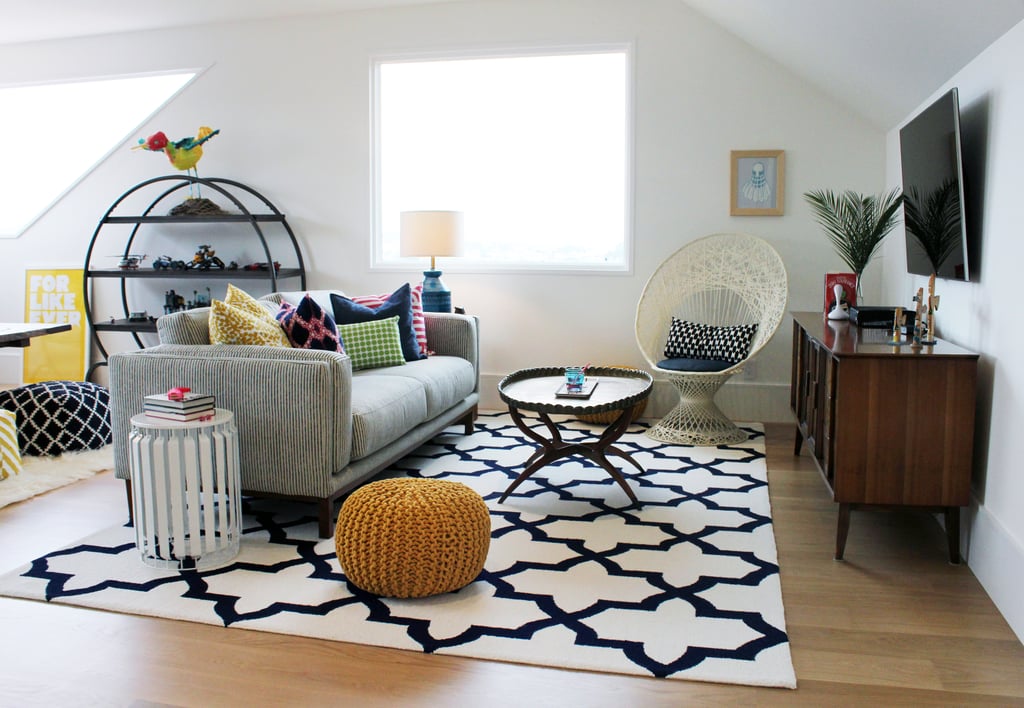 Image Source: POPSUGAR Photography / Lisette Mejia
Image Source: POPSUGAR Photography / Lisette Mejia
If the idea of getting your home company-ready is keeping you from hosting a dinner party or even your out-of-town in-laws, we can help. Sure, you could spend all day cleaning and decorating in anticipation, but who has the time? Here are the only things you really need to do before your guests arrive. Don’t worry — they are nothing but easy.
The Scent of Your Home
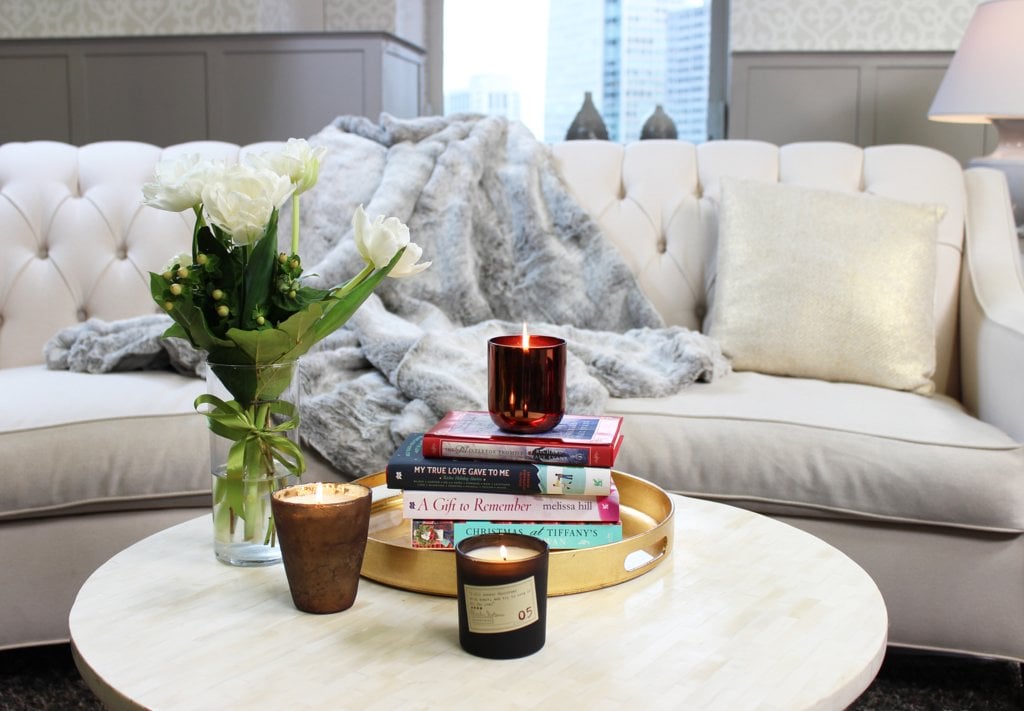 Image Source: POPSUGAR Photography / Brinton Parker
Image Source: POPSUGAR Photography / Brinton Parker
Decor isn’t the first thing guests
notice when they walk through your door — it’s the smell. Whether you’re
concerned about the fish you cooked the night before or your dog skipping a
bath — or worse, the scents you’ve become nose-blind to — put your
mind at ease by lighting a candle or simmering a small pot of citrus peels and
cinnamon sticks a half hour before guests arrive. We can’t get enough of these yummy-smelling candles.
A Well-Stocked Bar
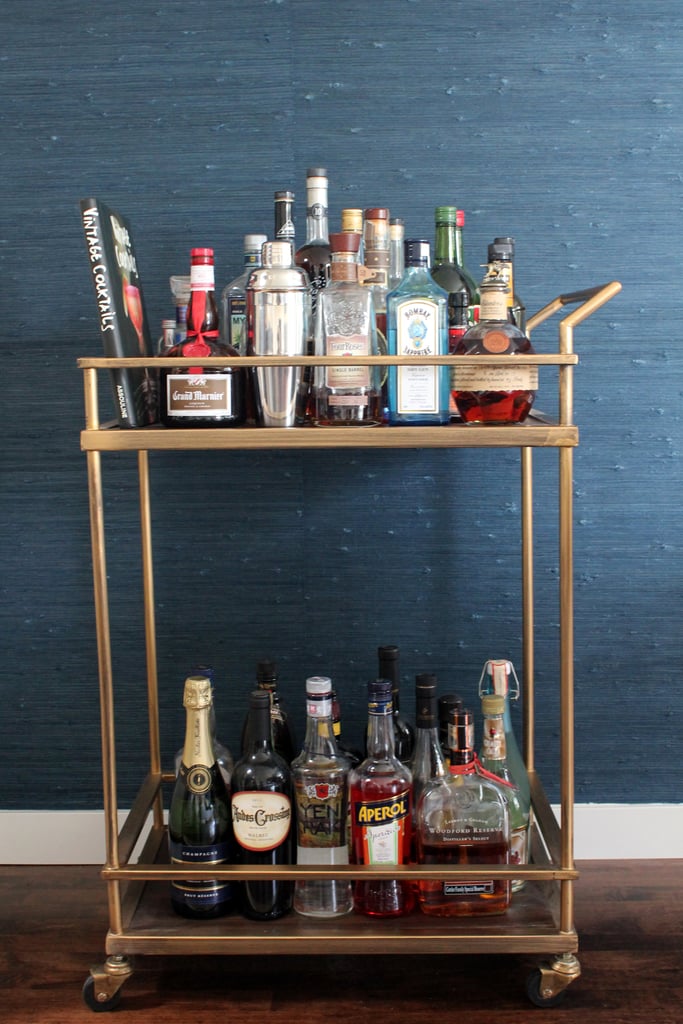 Image Source: POPSUGAR Photography / Lisette Mejia
Image Source: POPSUGAR Photography / Lisette Mejia
After greeting guests, the first
thing that you will want to do is offer them a drink. You don’t need to be full
service, but make sure you have the home bar basics covered.
Fresh Flowers
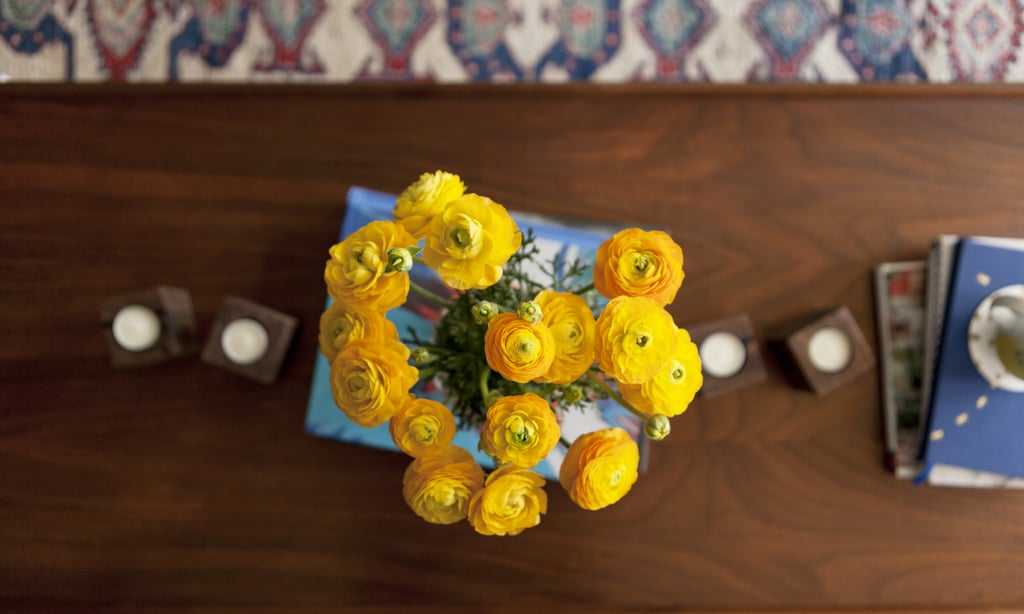 Image Source: POPSUGAR Photography / Mark Popovich
Image Source: POPSUGAR Photography / Mark Popovich
Flowers are the only decoration a
house really ever needs, no matter the occasion (although we feel pretty
strongly about candles too!). To get the most bang out of your buck, buy potted
flowers, like orchids. They may look delicate, but with proper care, they
will last for a month or longer.
The Lack of Clutter
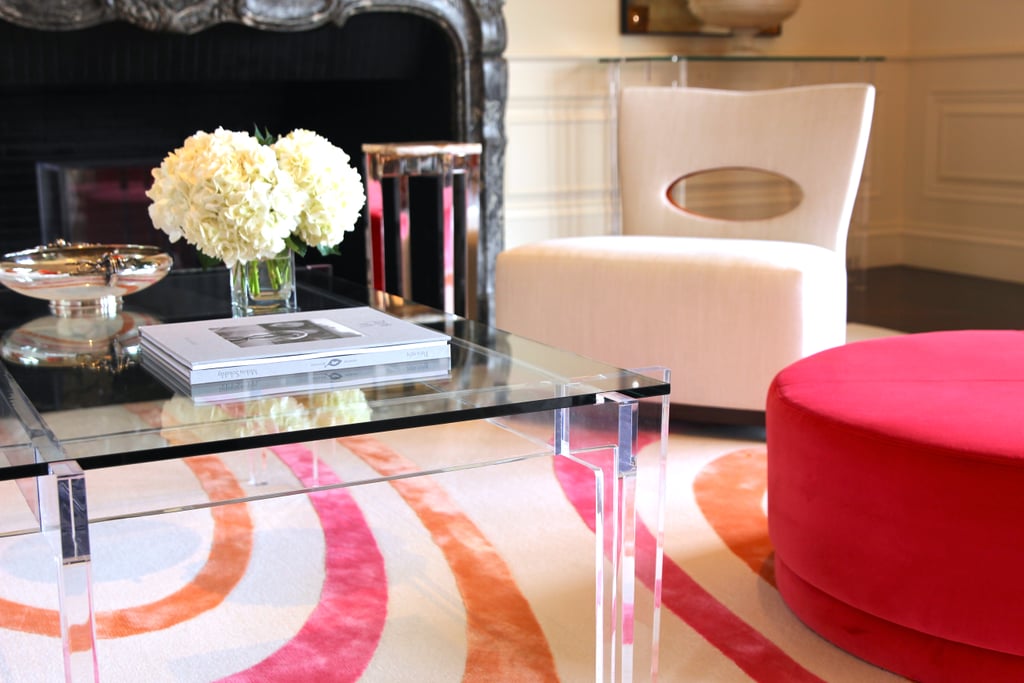 Image Source: POPSUGAR Photography / Grace Hitchcock
Image Source: POPSUGAR Photography / Grace Hitchcock
Even if you don’t have time to do a
deep cleaning, you can still organise your clutter. Get a tray or a set of
lidded boxes for each room and corral all the odds and ends — remotes,
keys, mail — in one place. Guests will feel relaxed in a space that
appears organised, even if it is just for show!
A Tidy Bathroom
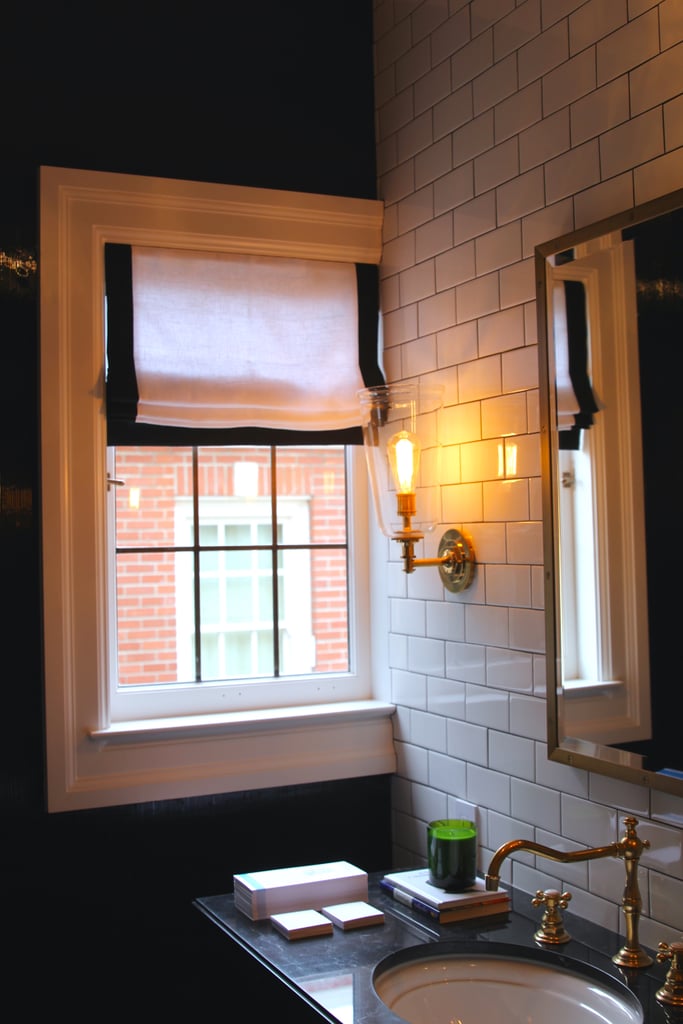 Image Source: POPSUGAR Photography / Grace Hitchcock
Image Source: POPSUGAR Photography / Grace Hitchcock
Before guests arrive, make sure your
bathroom has clean hand towels and enough toilet paper. Extra points for wiping
down surfaces and lighting a candle
An Organised Entryway

Image Source: POPSUGAR Photography / Lisette Mejia
Not only is it the first place and
last place that your guests will see, your entryway is also where they will be
dropping their coats and bags. Depending on how much room you have, add a coat
rack, umbrella stand, and a place to sit while taking shoes on or off.
Comments (0)
01 June 2018
By portermathewsblog
popsugar.com.au
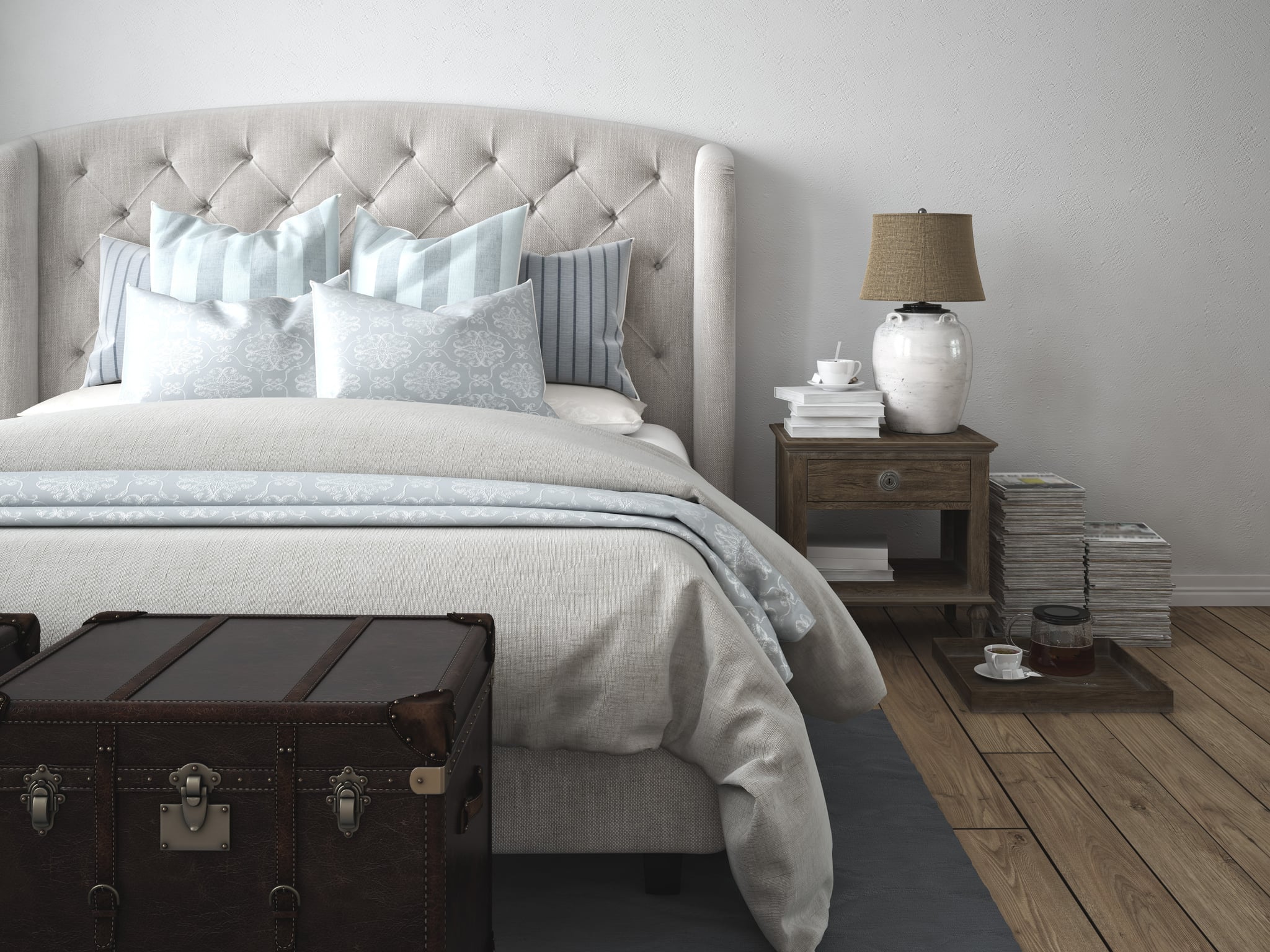
You’ve worked hard to make your bedroom a welcoming sanctuary, but beneath its pretty facade, there could be serious health hazards lurking. Read on to uncover the bedroom dangers that could be harming you while you sleep and learn what you can do about them.
Air Quality
Let your bedroom air out by opening the windows as weather permits each day. It will refresh the space and void it of noxious gasses that can build up indoors over time.
Not only will a potted plant or two beautify your bedroom, but they will also release oxygen and help filter out harmful compounds emitted by everyday cleaners, detergents, and fragrances. Studies show that these 10 houseplants can even improve your health.
A quiet air filterer is an efficient way to purify your bedroom of dangerous pollutants and agitating allergens like dust mites, pollen, and pet dander.
Cleanliness
Even with an air filter, it’s important to keep dirt and dust mites at bay by cleaning regularly. Pay special attention to areas that tend to accumulate them the most, including the floor, baseboards, windowsills, and upholstery. Even “clean” people often forget to wash these eight things.
The amount of dead skin, grime, and dust mites that collect on your bedding is rather horrifying and can cause problems from asthma to acne. The good news is it’s easy to get rid of by cleaning your sheets, duvet, and pillowcases every 1-2 weeks. Case in point? This horrific study reveals the horrific result of not washing your pillows for just two years.
Keep moisture from getting stuck in your bedding and mattress and causing problems by airing it out briefly before you make the bed in the morning. Pull back the sheets, fluff out the pillows, and give everything a few minutes to dry before they’re closed back up for the day.
Hidden Toxins
Bad news for memory foam pillow-lovers. These ergonomic head rests often outgas dangerous Volotile Organic Compounds or VOC’s that can cause headaches, nausea, and eye irritation. You don’t want your face, mouth, or nose anywhere near them. Swap them for pillows filled with organic materials, like wool or feathers, or at least a safer foam like a natural latex foam.
- Flame Retardant-Free Mattress
Considering how much time you spend in close proximity with your mattress each day, it’s a no-brainer to make it a safe one. While many products, including mattresses, were once doused in flame-retardant chemicals, it’s come to light that these chemicals are doing much more harm than good. They’ve been linked to types of cancer, birth defects, and fertility issues. Scary stuff, and reason to seek out an organic, chemical-free mattress.
In small apartment or studio, space is at a premium and spaces may have to do double duty – but do your best to keep office equipment away from your bed, especially if it’s running all the time. Research has shown that laser printers emit tiny particles into the air that may be dangerous.
Comments (0)
28 May 2018
By portermathewsblog
reiwa.com.au
 One of the most widely misunderstood elements of real estate is what condition a property should be in at settlement or possession.
One of the most widely misunderstood elements of real estate is what condition a property should be in at settlement or possession.
What does ‘buying as inspected’ really mean?
In short, a property is sold “as inspected”. If there was dust on a ceiling fan when you first inspected before contracting to buy then the fan can be dusty at settlement. The same goes for a dirty oven, a blown light globe or a squeaky laundry door. If it was dirty, blown or squeaky at inspection before purchase then so it should be at settlement.
Buyers will typically expect that the property is handed over to them spick n’ span and thankfully most house-proud sellers leave their homes in an appropriate condition when moving out, however legally there is no obligation for them to do so.
What should you expect at settlement?
If you’re buying a home, it’s smart to have a realistic expectation of what to expect at settlement.
Unless otherwise specified in the contract, the seller is under no obligation to have the property professionally cleaned for settlement and it is surprising how few buyers ask that such a condition be included.
The seller’s only obligation under the contract (Clause 6.1(b) 2 of the General Conditions) is to “…remove from the Property, before possession, all vehicles, rubbish and chattels, other than the Property Chattels.”
Many modern contracts to purchase include provision for essential plumbing, gas and electrical components to be working at settlement. Hence, if at settlement the toilet cistern leaks then the seller ought to make good because the contract says so.
It is trickier when, for example, a telephone jack doesn’t work at settlement. It is not strictly electrical but it is probably reasonable for a buyer to assume that it was functioning at inspection. This is partly because, caveat emptor (buyer beware) has all but disappeared according to some legal practitioners. The onus is probably on the seller to disclose (in this case) that the telephone jack didn’t work.
How to ensure you’re happy with the property at settlement
My view is that buyers need to take reasonable steps to ensure the property they have bought will be presented to them in a condition they are satisfied with.
This can be achieved by either contracting with the seller to guarantee it and/or being more thorough when inspecting the property in the first instance. Ask the agent if it’s ok to turn on taps, flush loos, flick switches, open and close doors, open the oven, turn on the dishwasher and so on before making an offer to purchase.
Buyers ought to have a realistic expectation of what to expect at settlement when buying an established home and acknowledge that opinions of presentation are subjective.
Speak to our market experts on 9475 9622 to discuss about your property concerns
Comments (0)